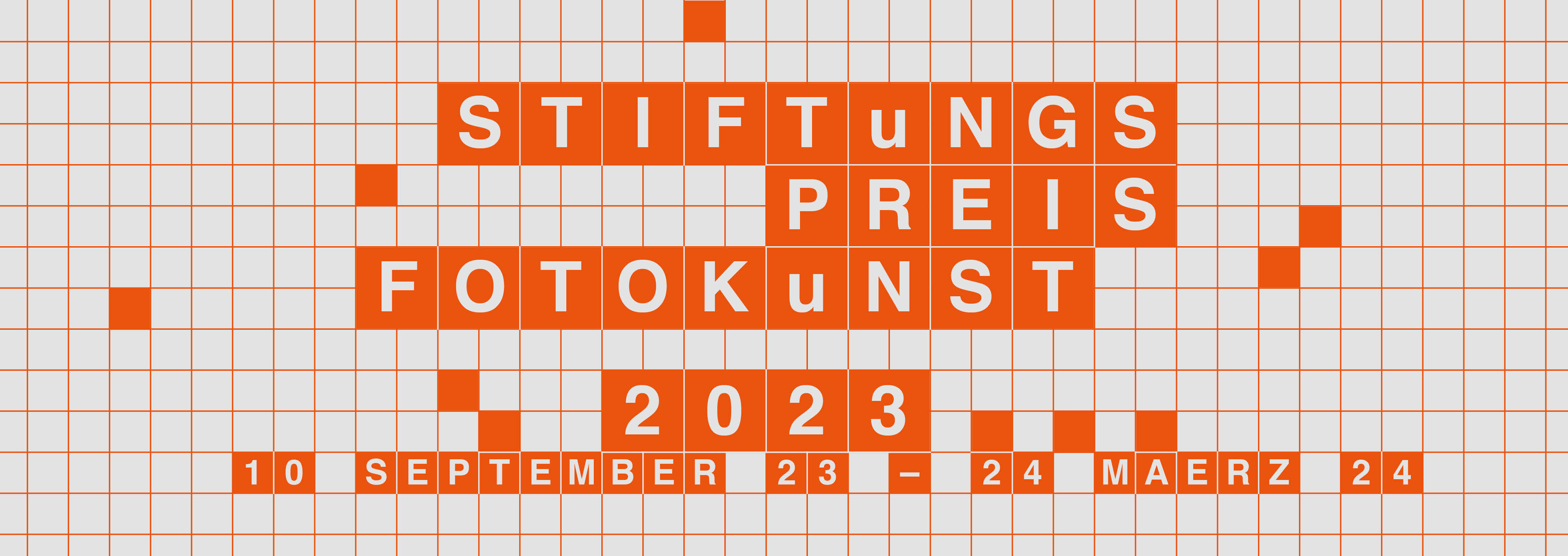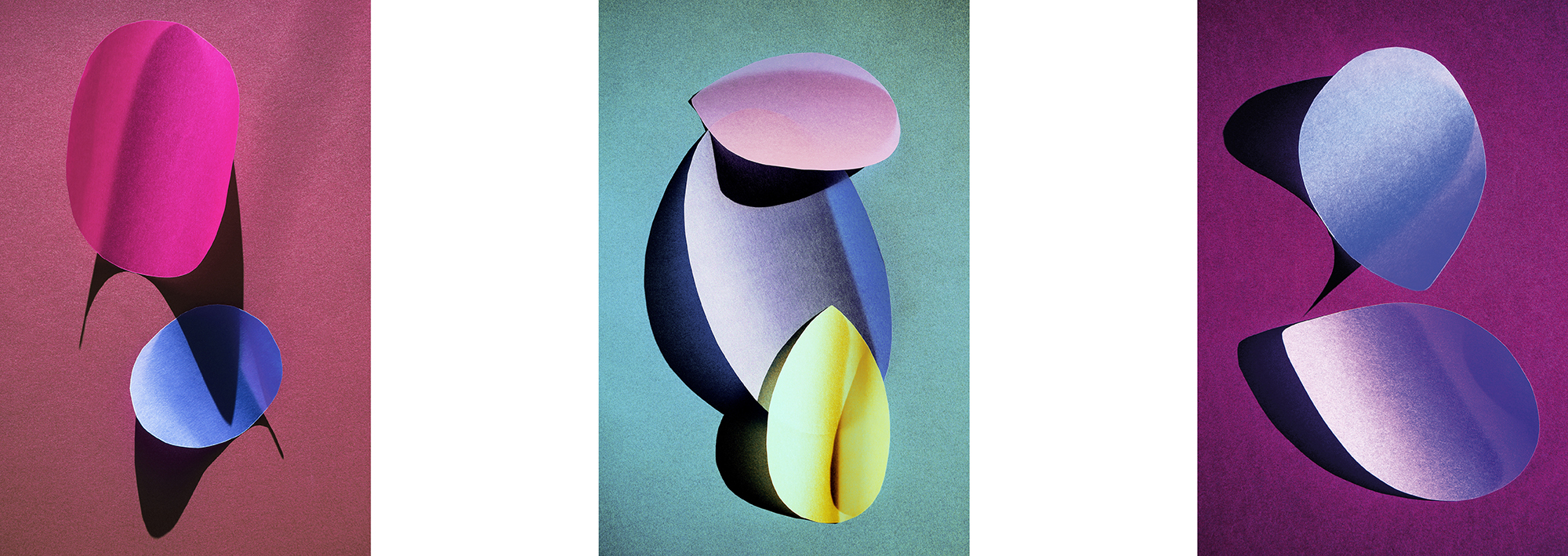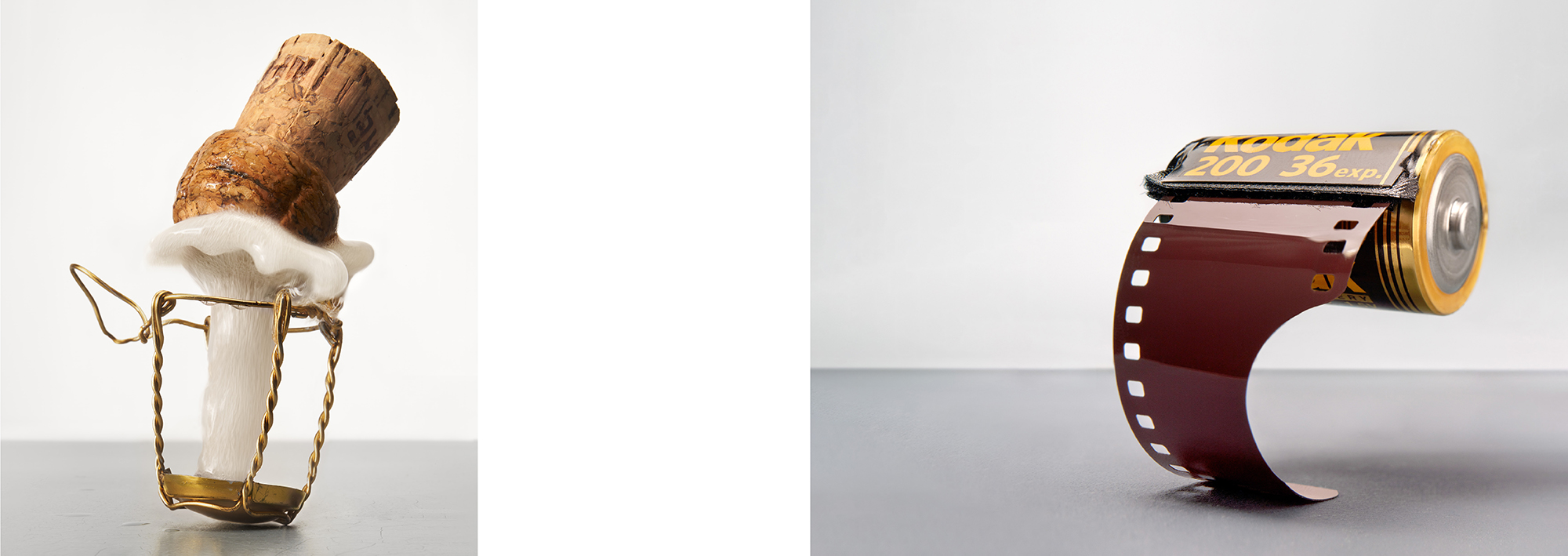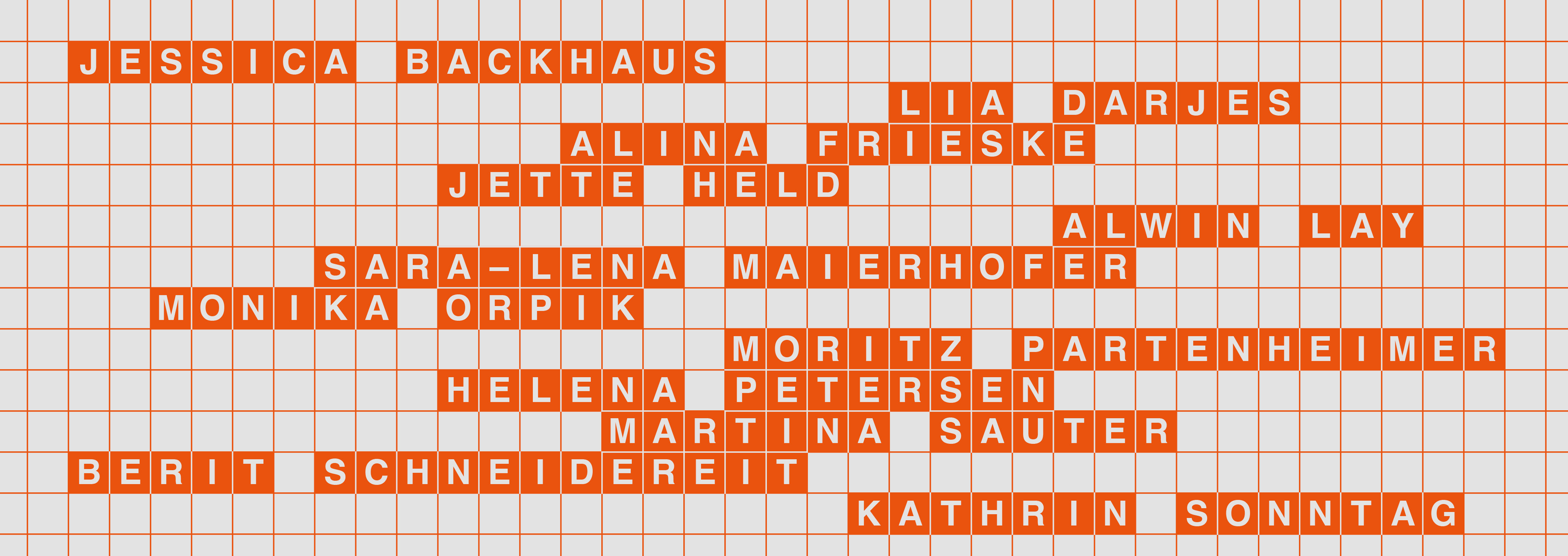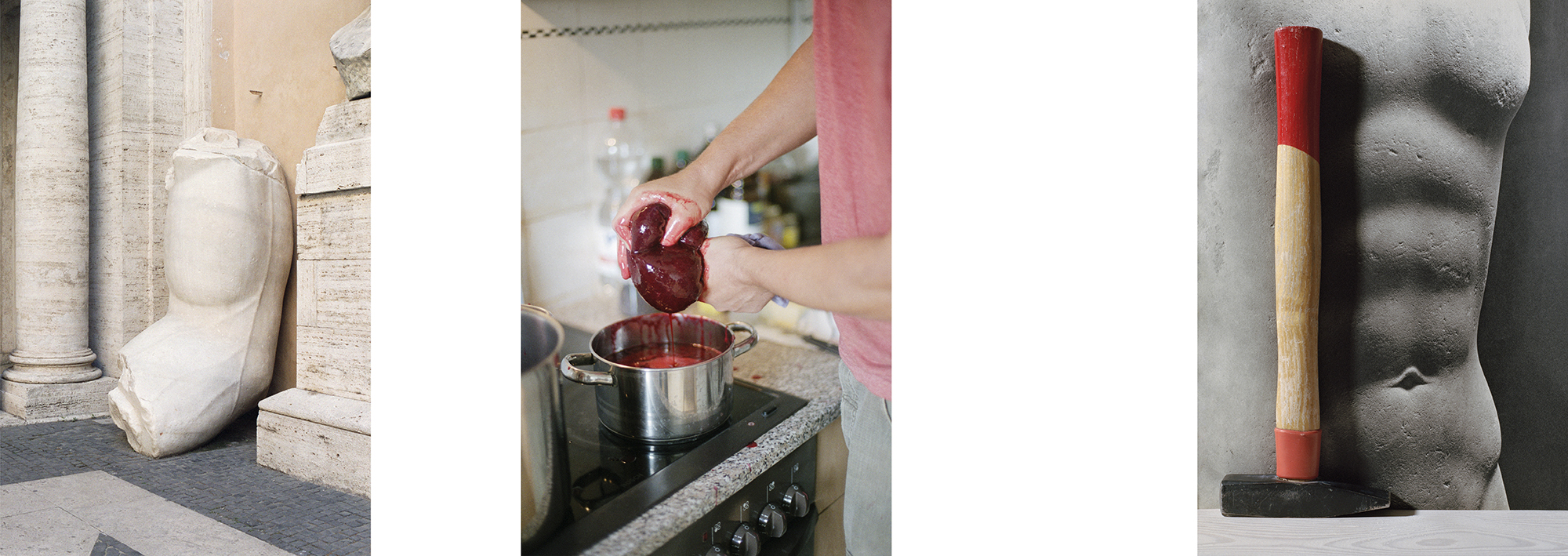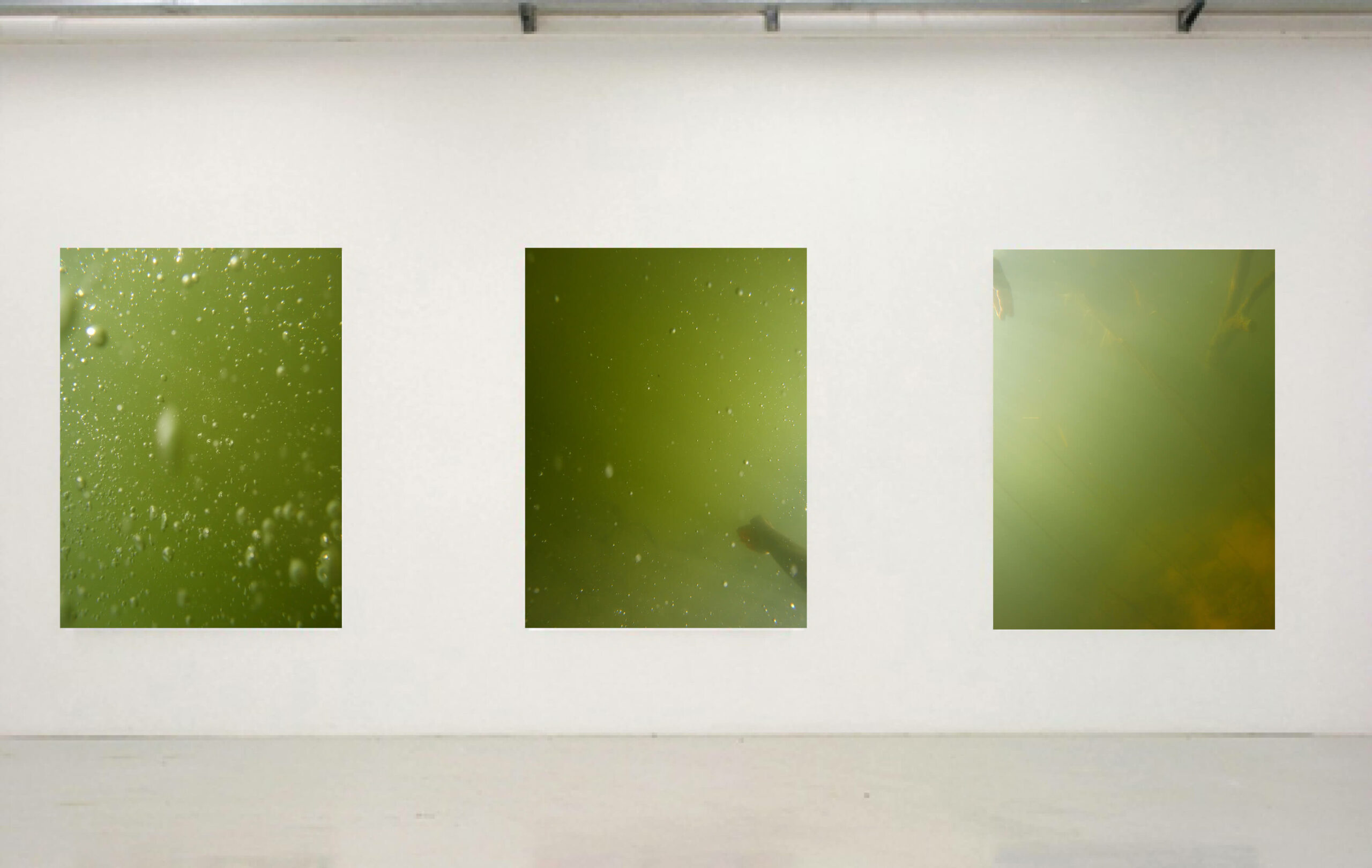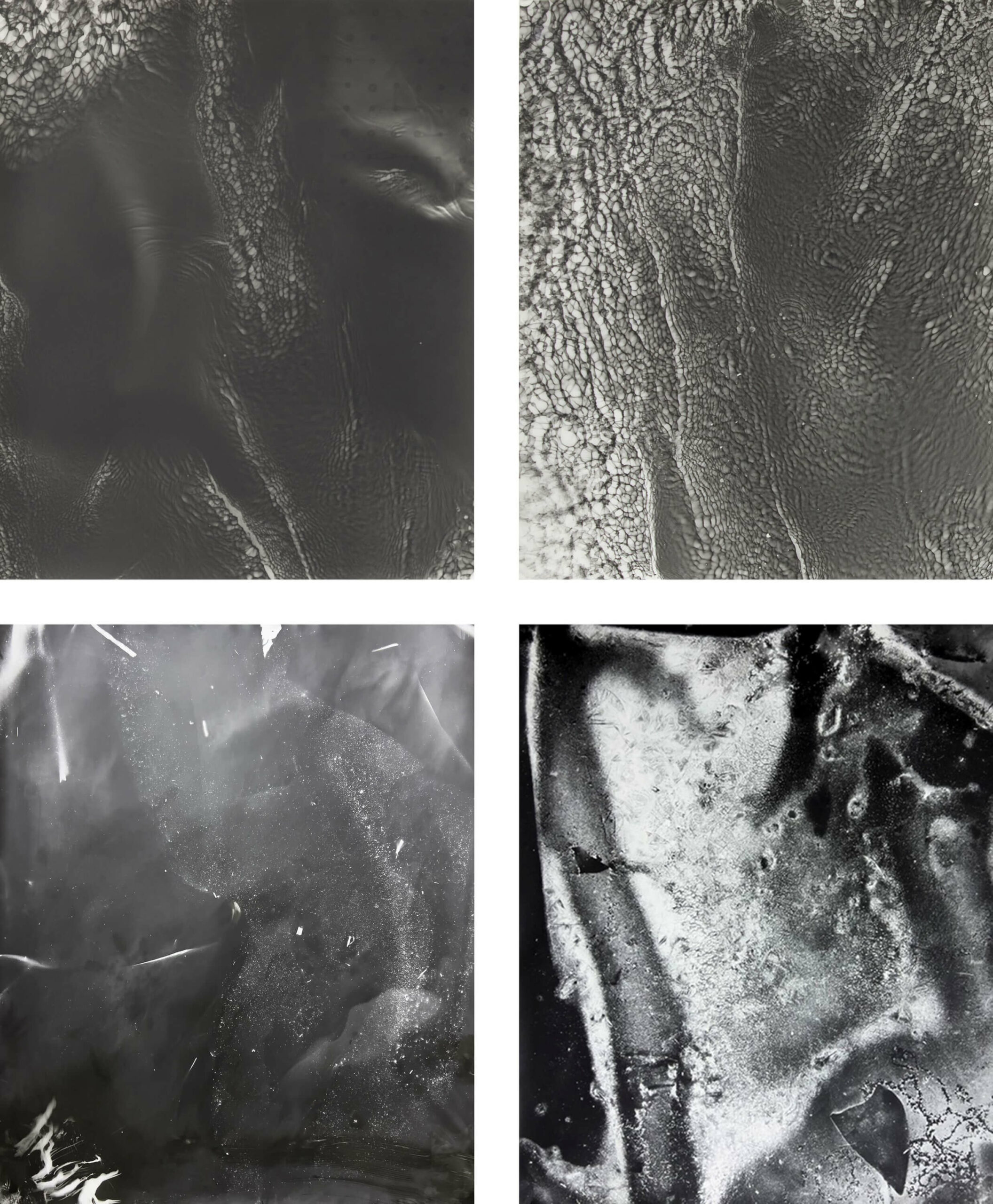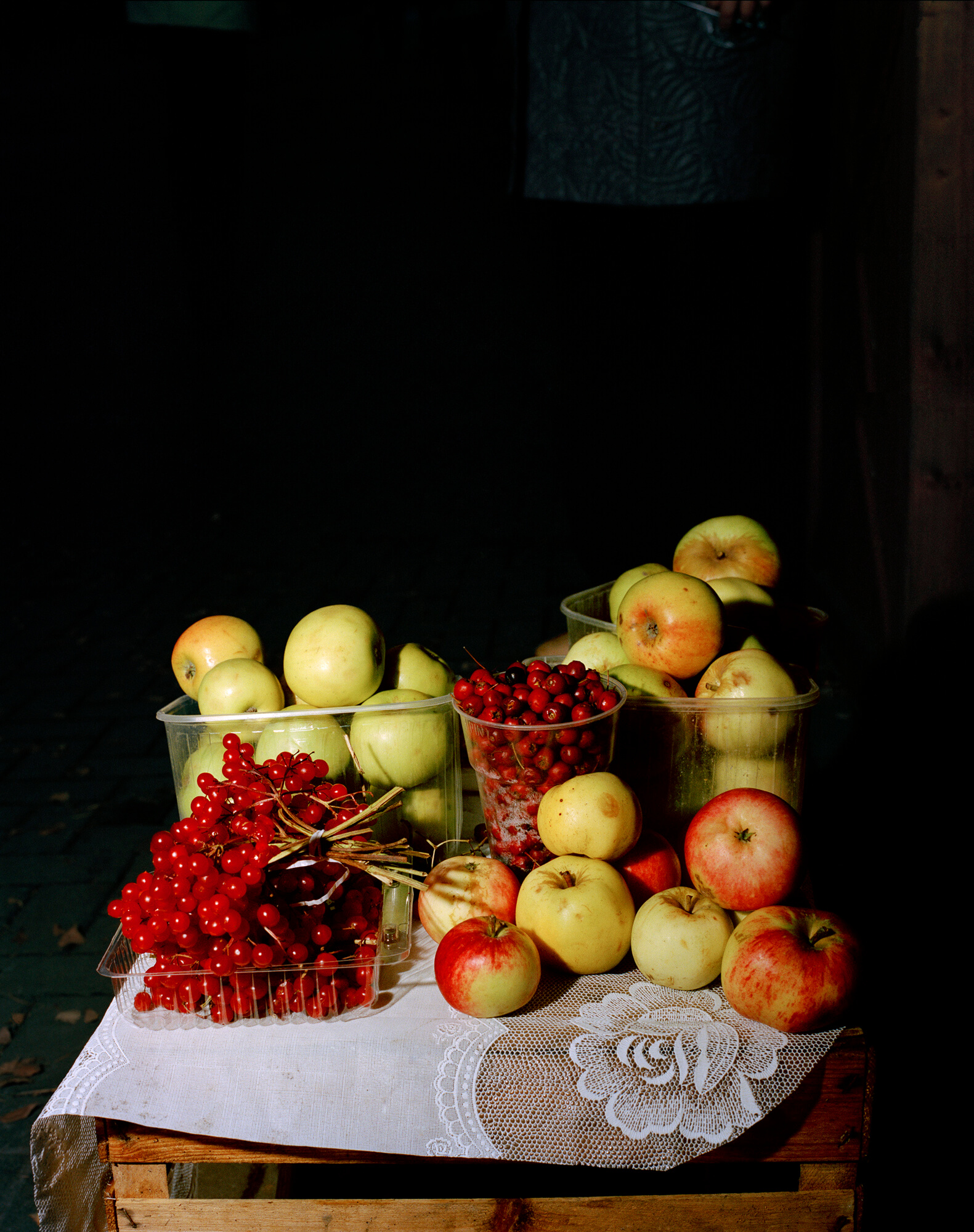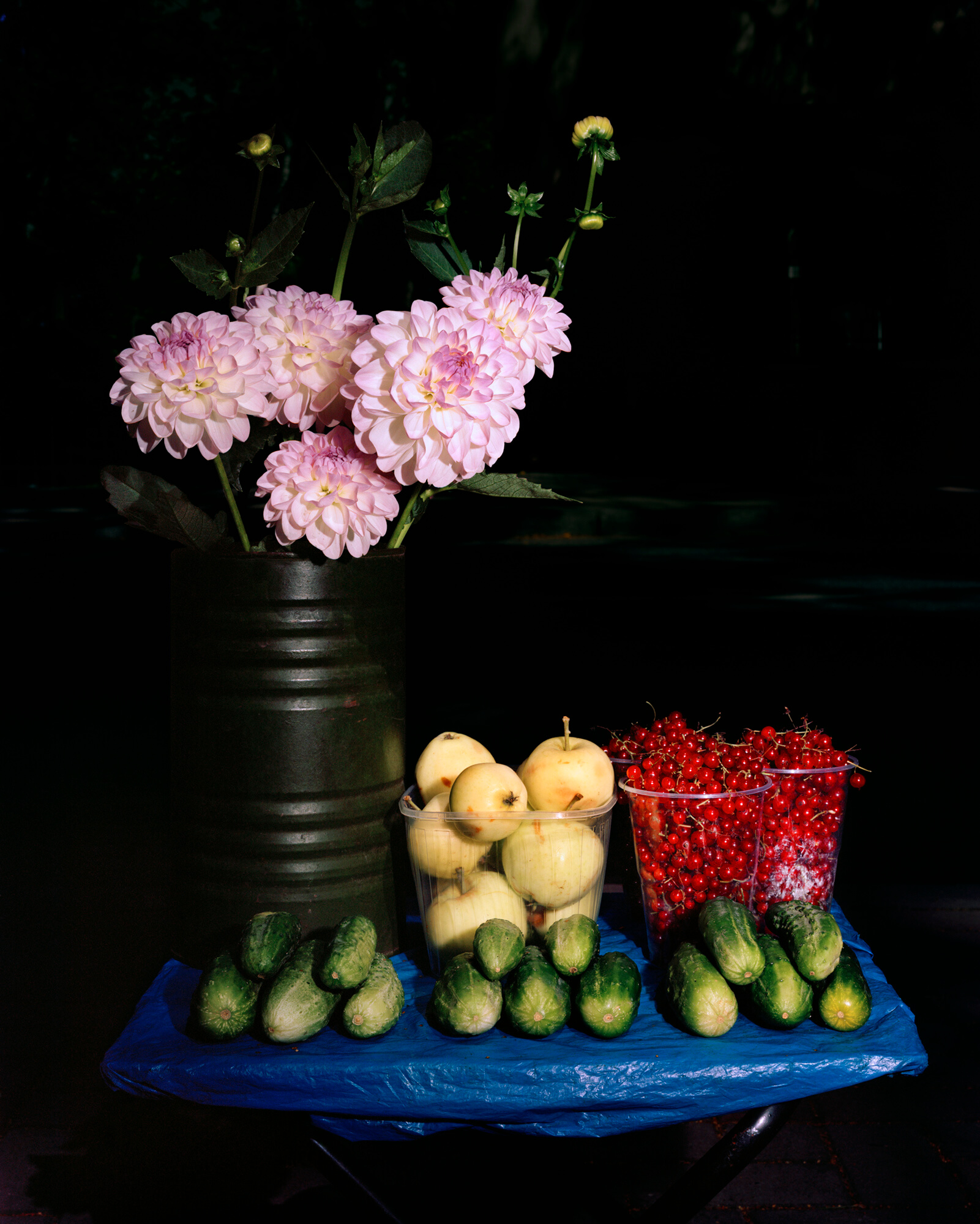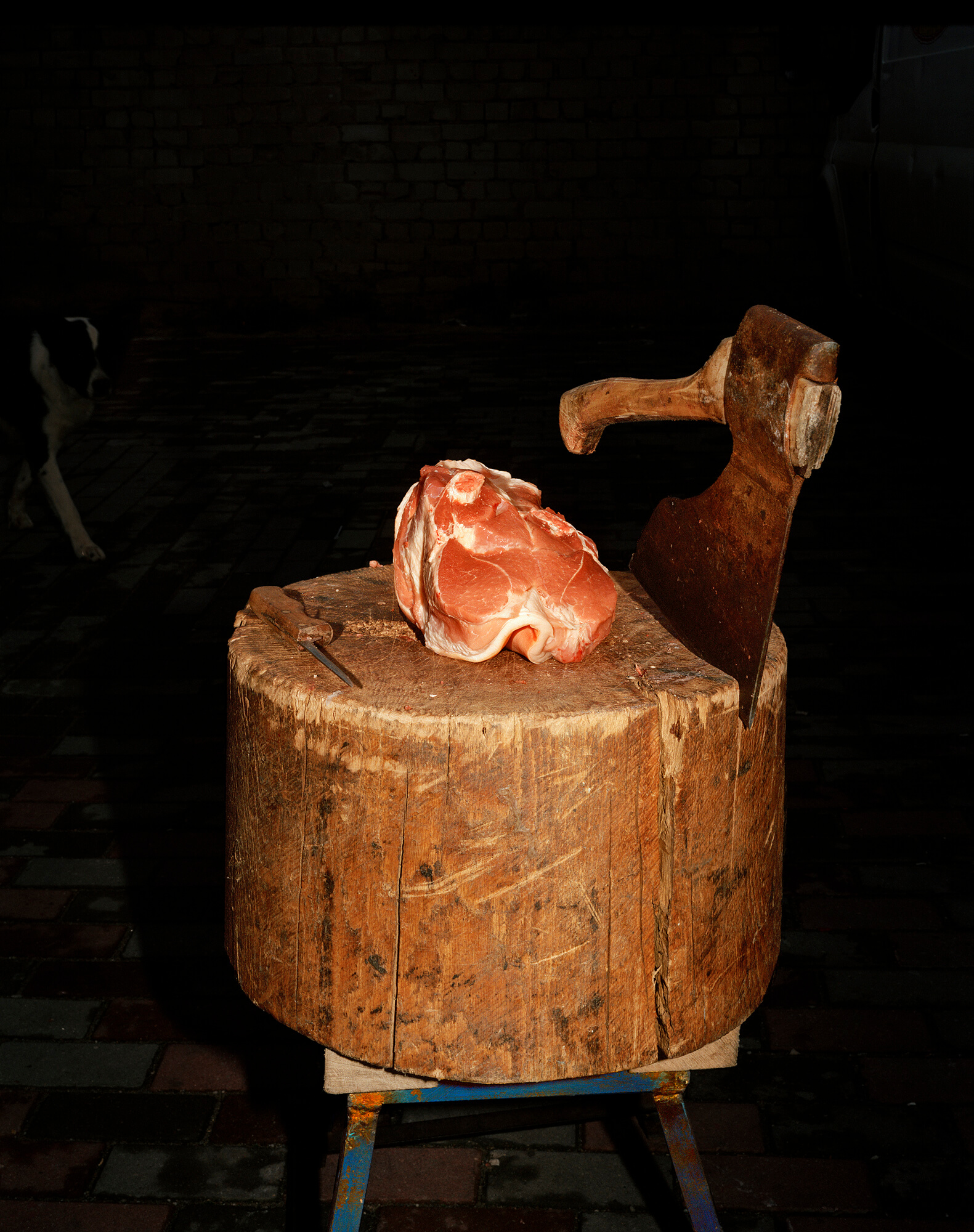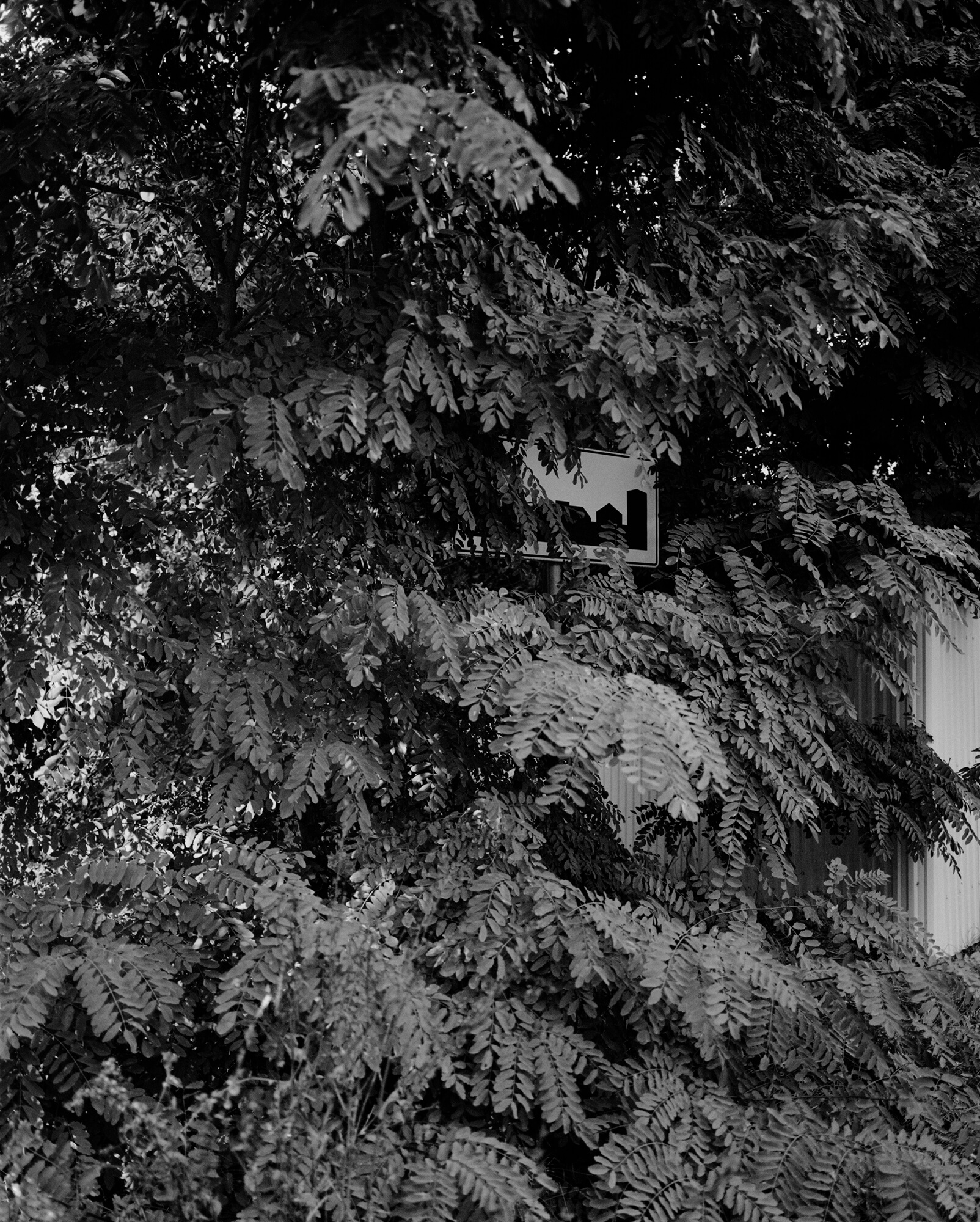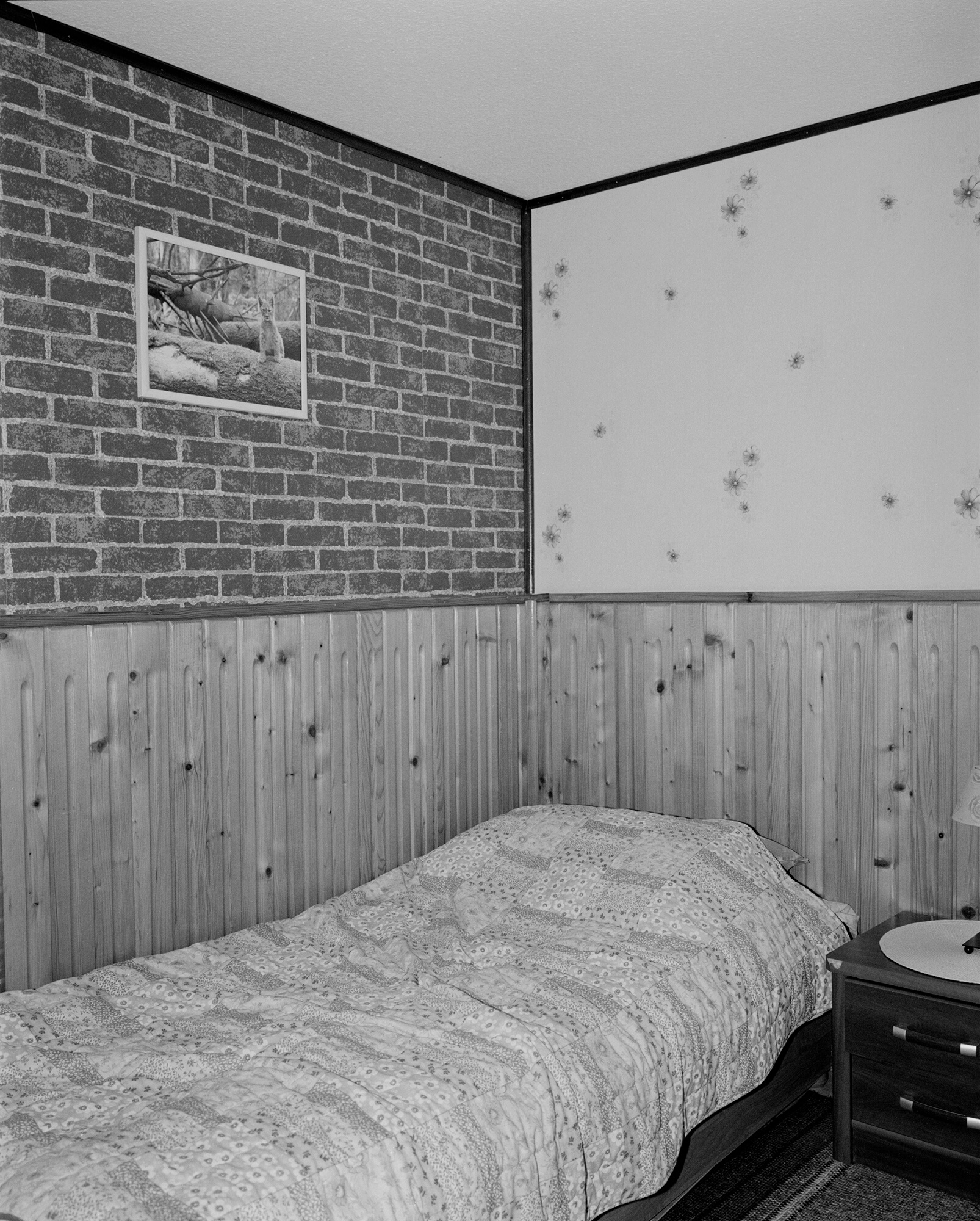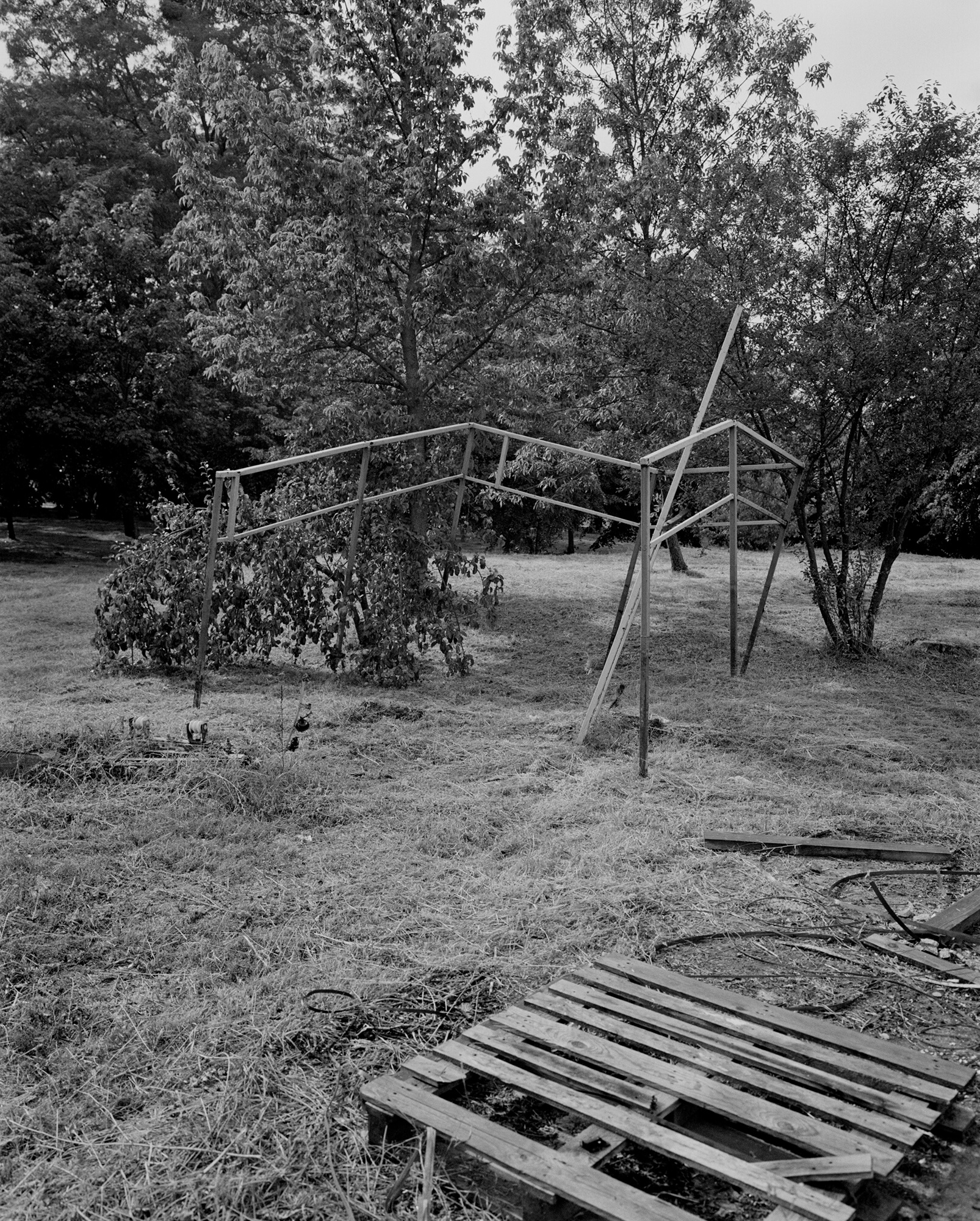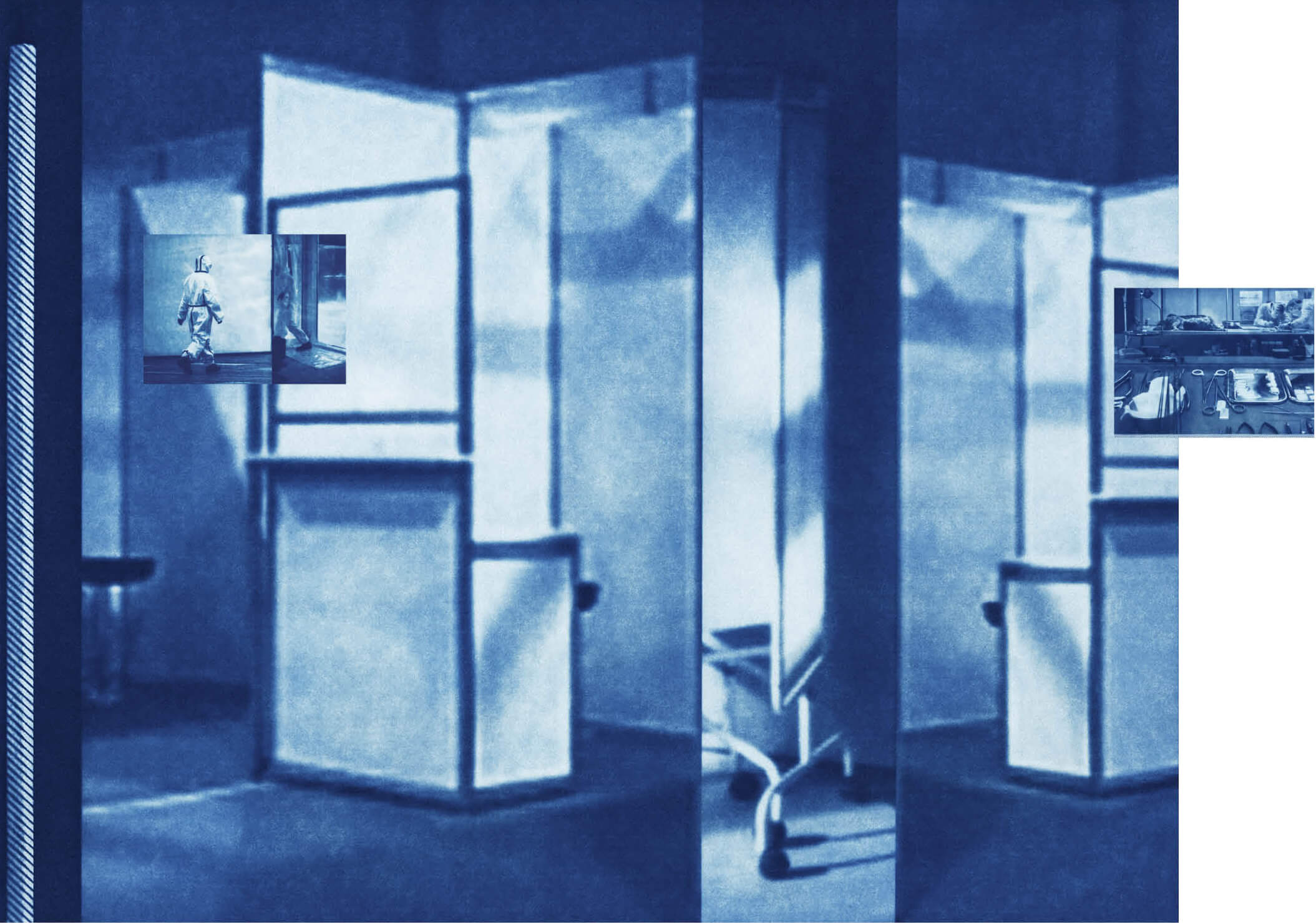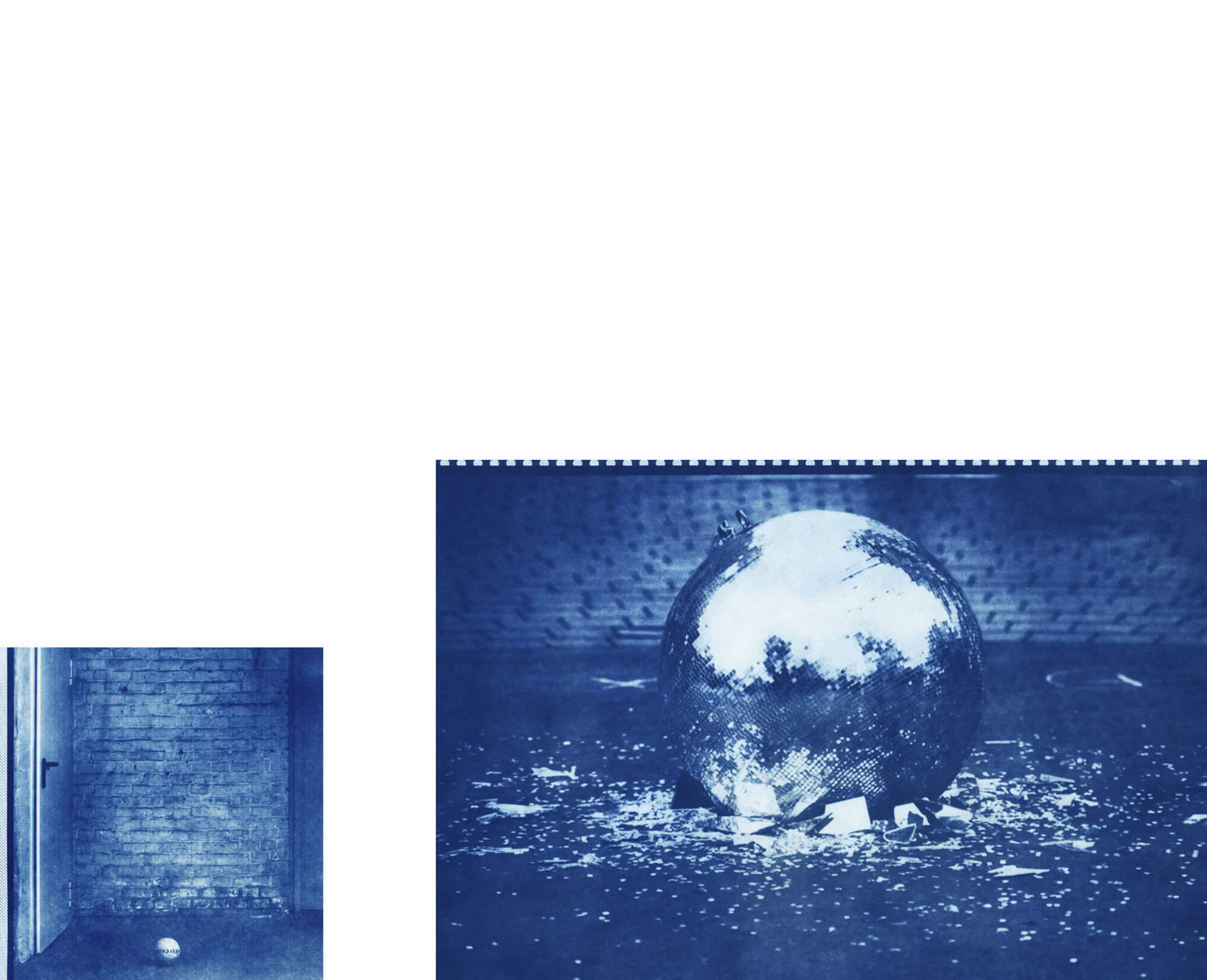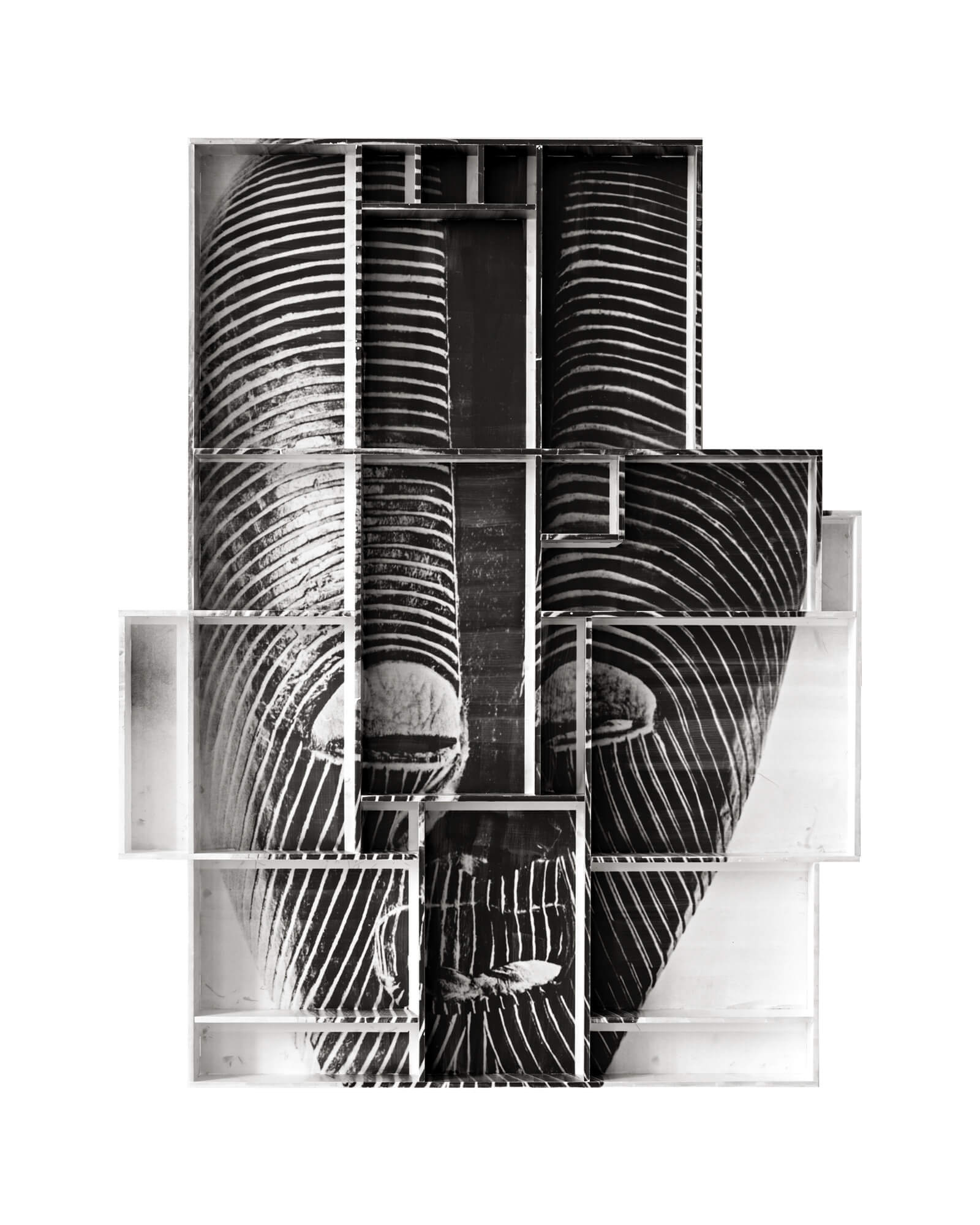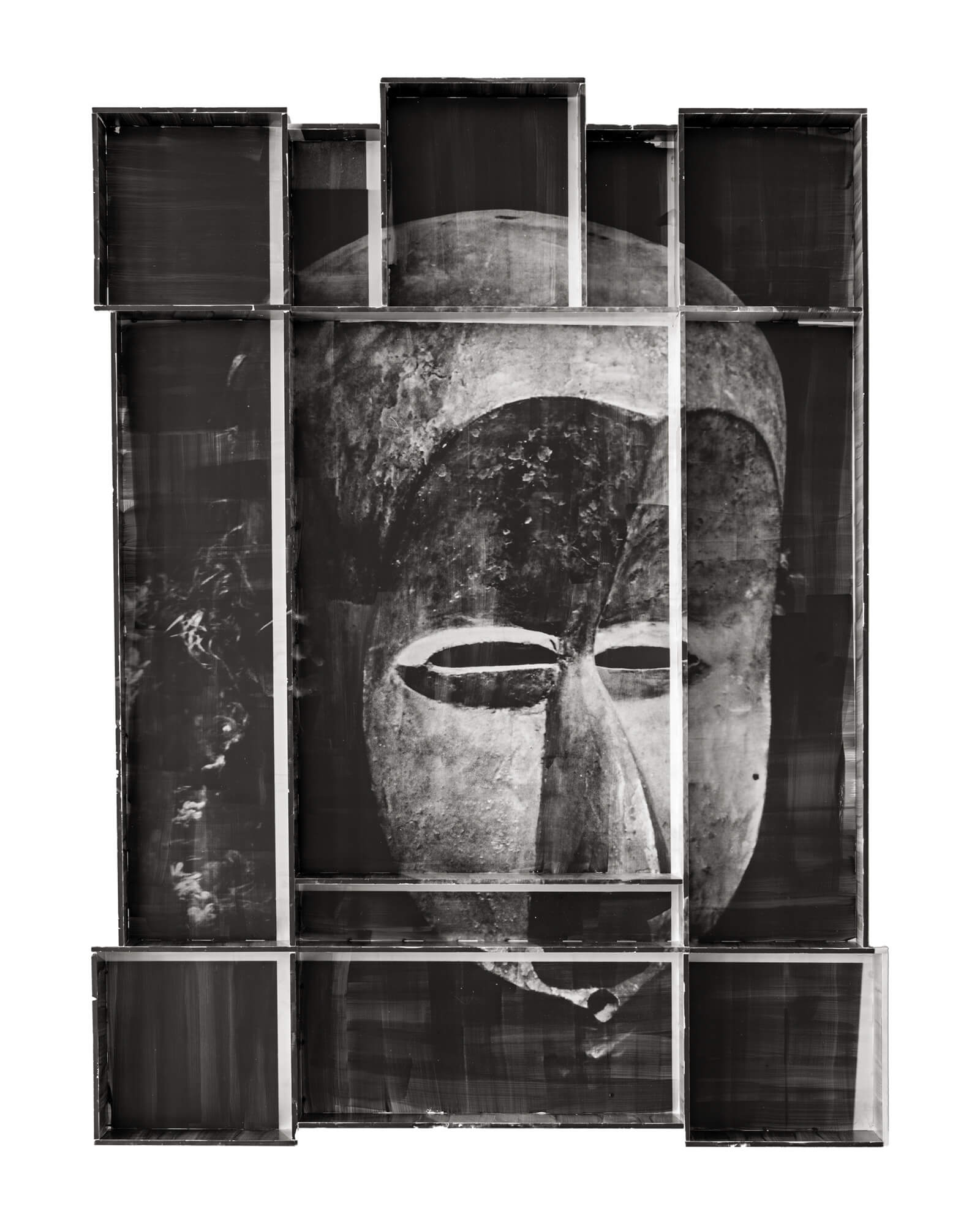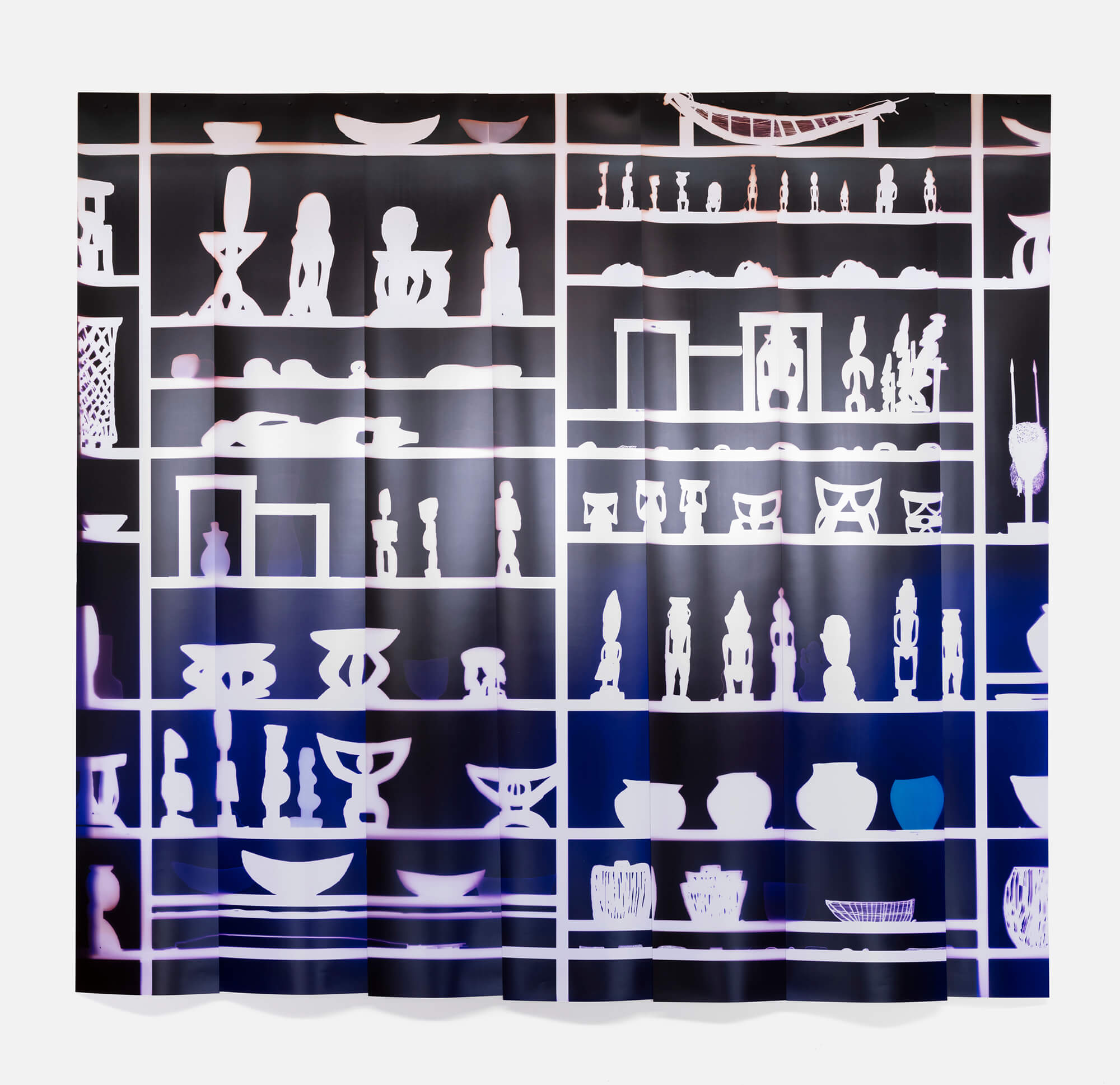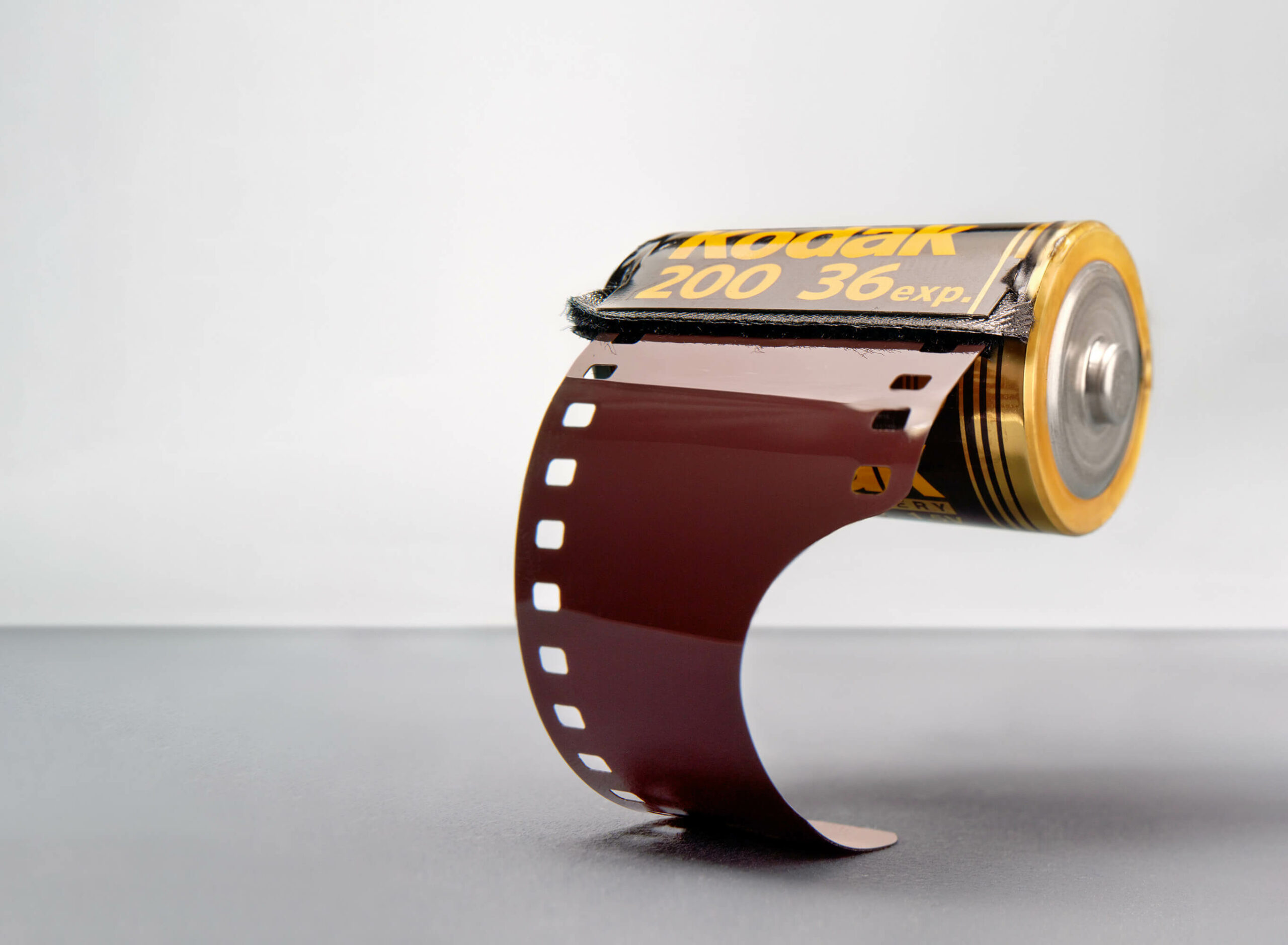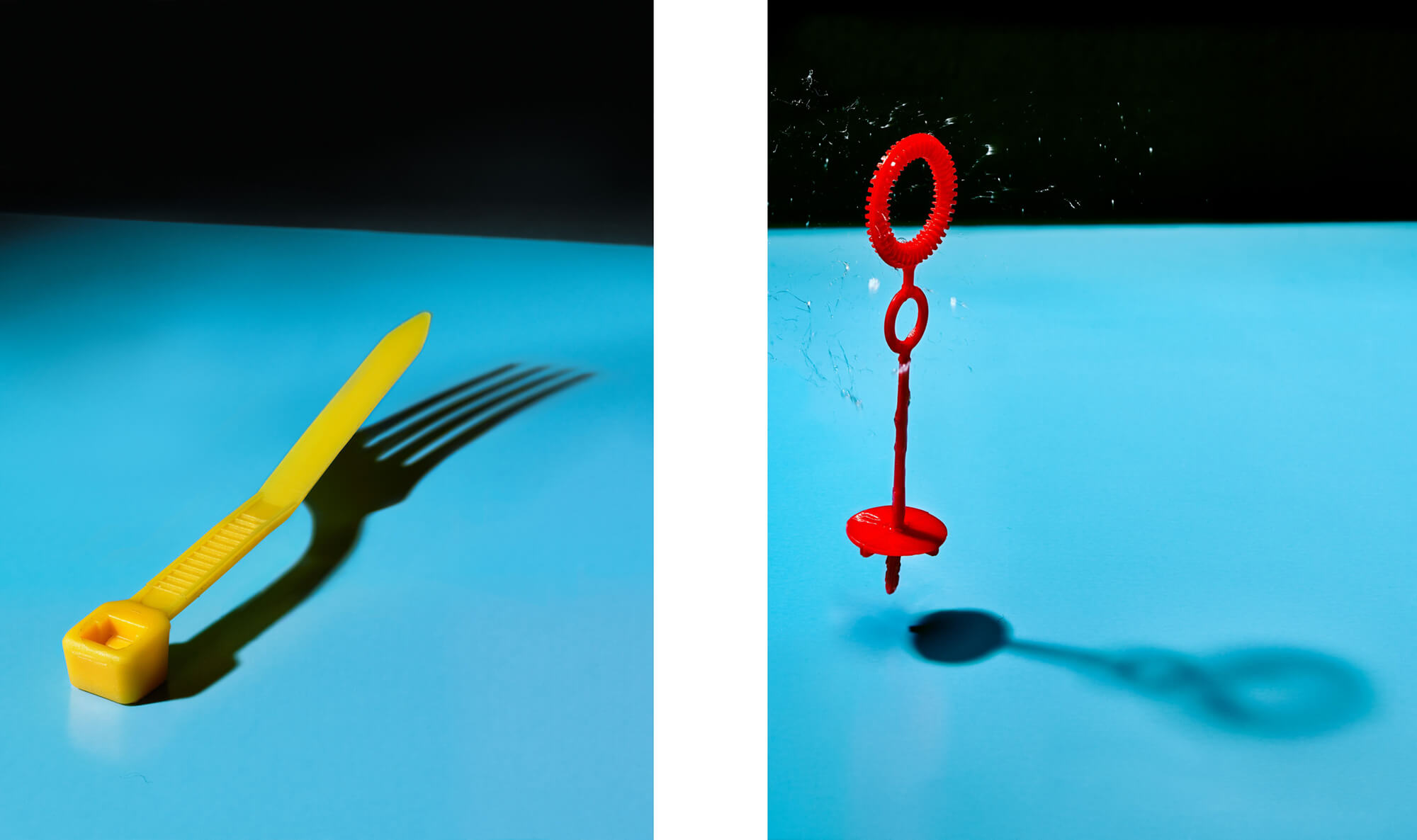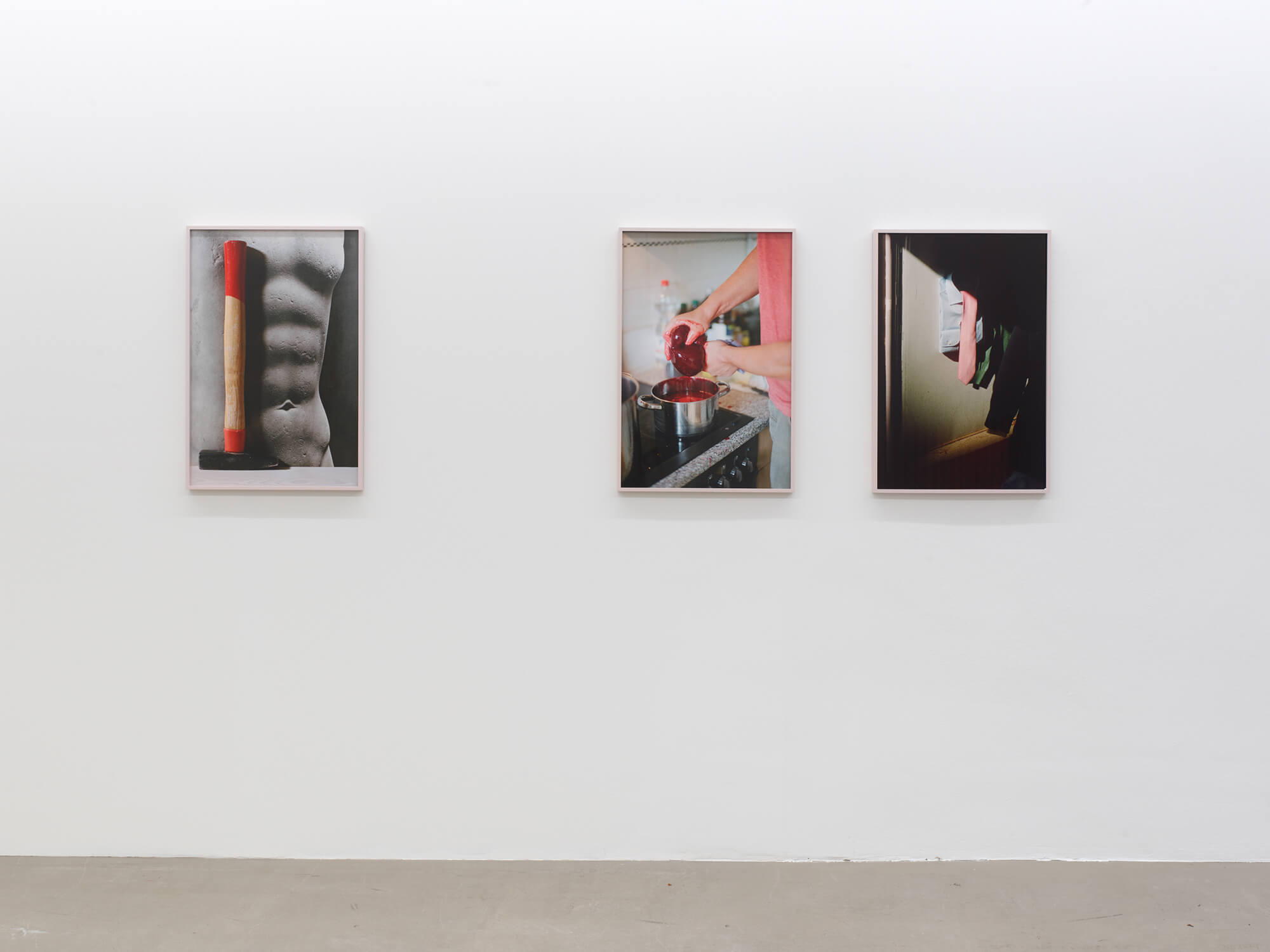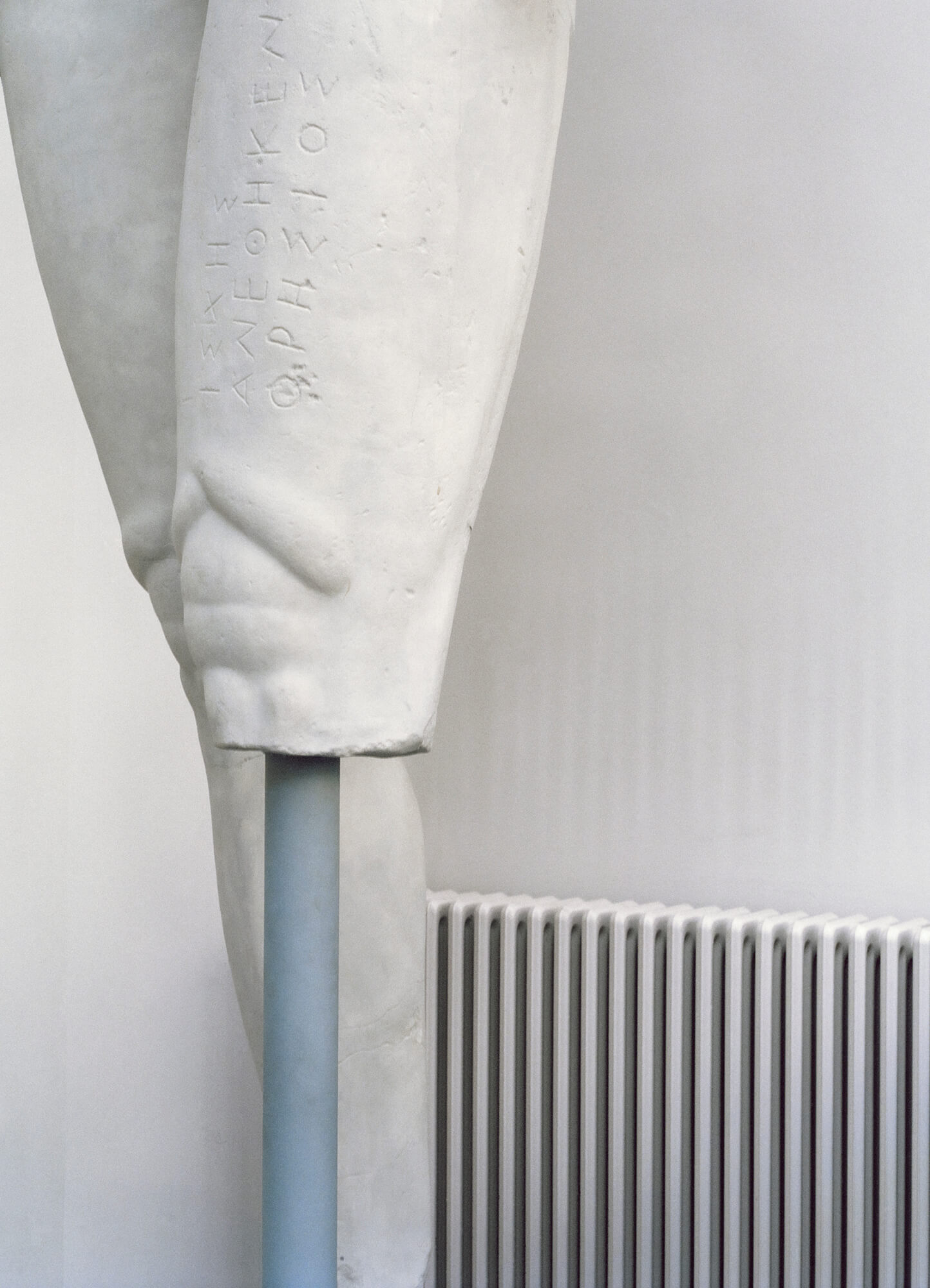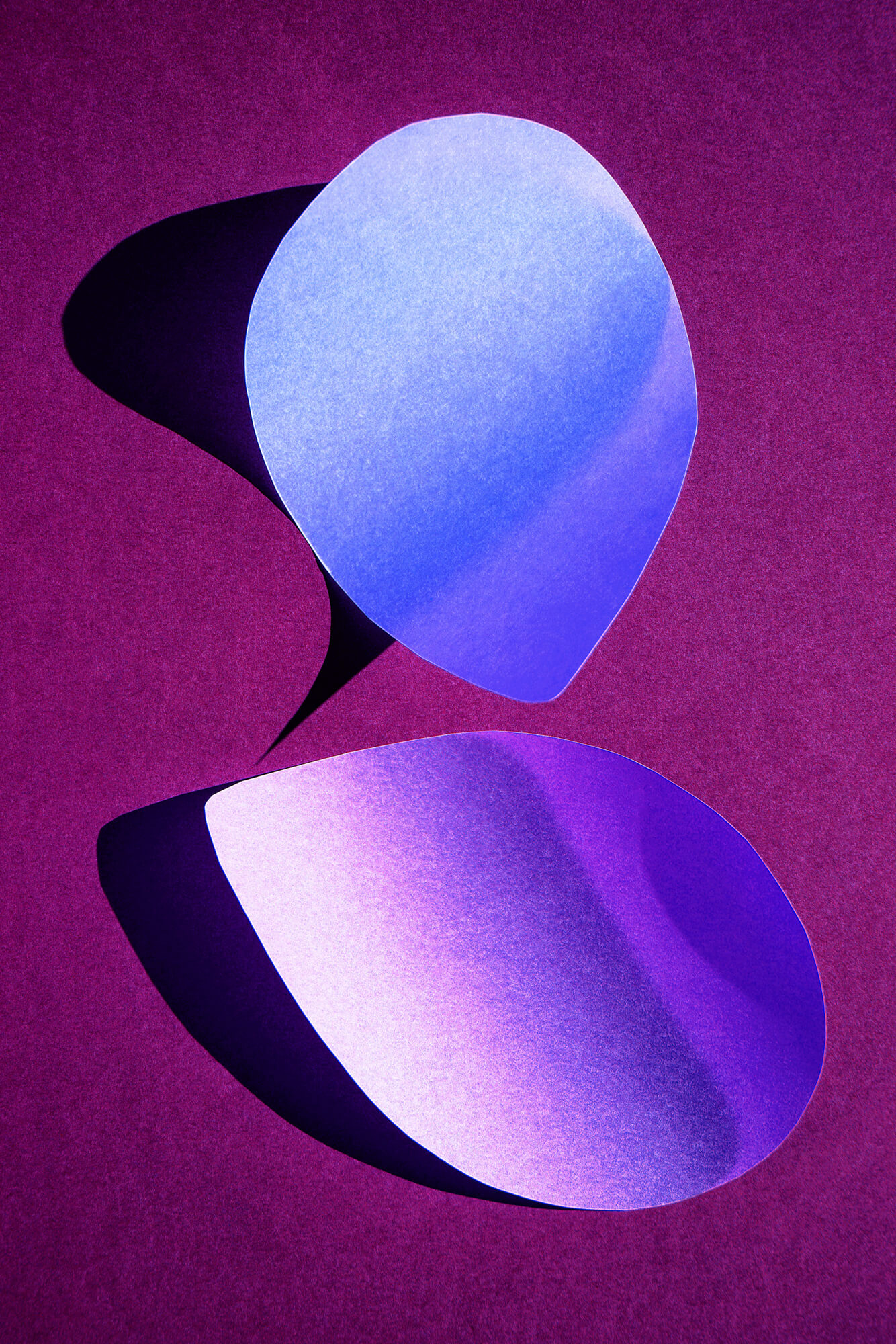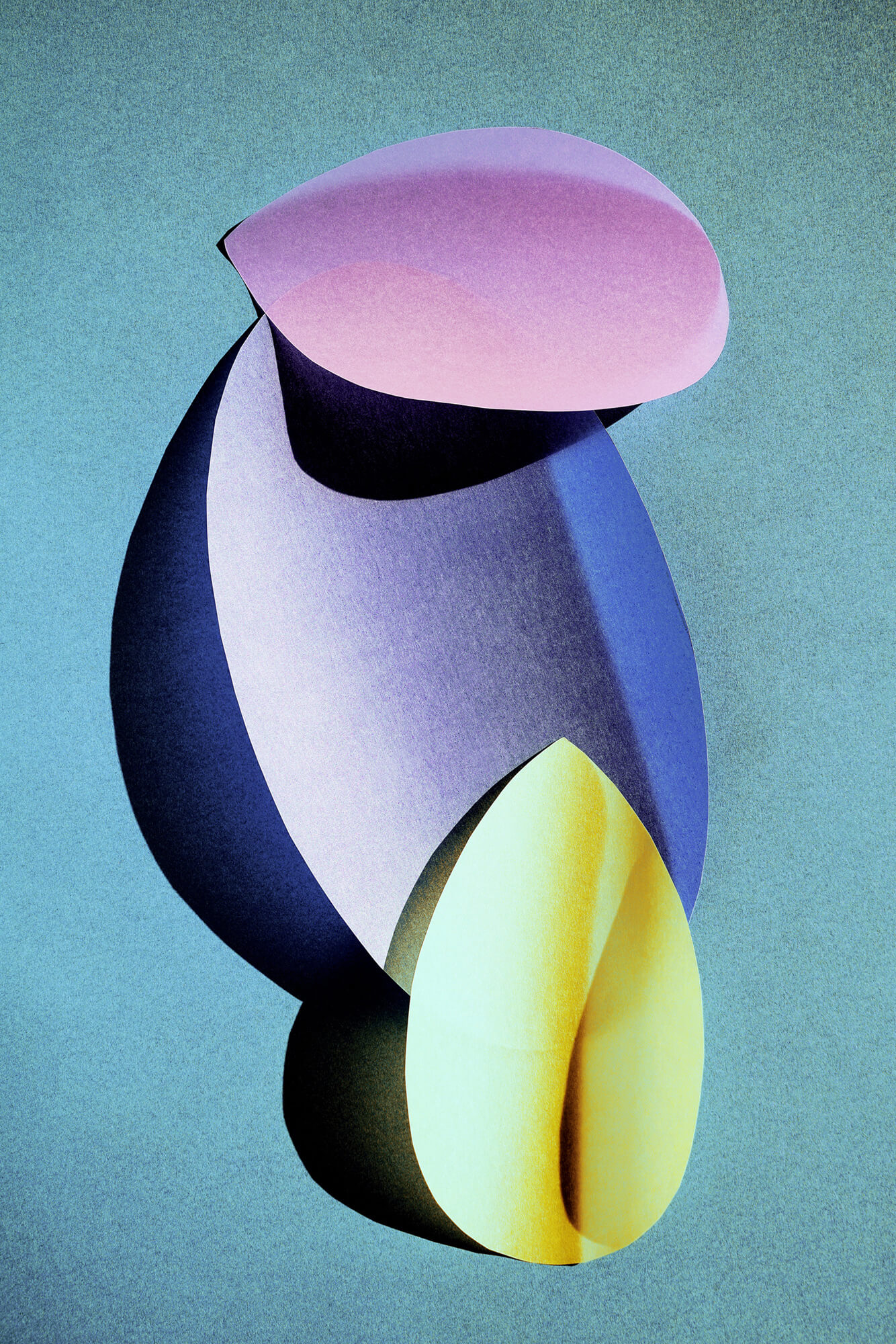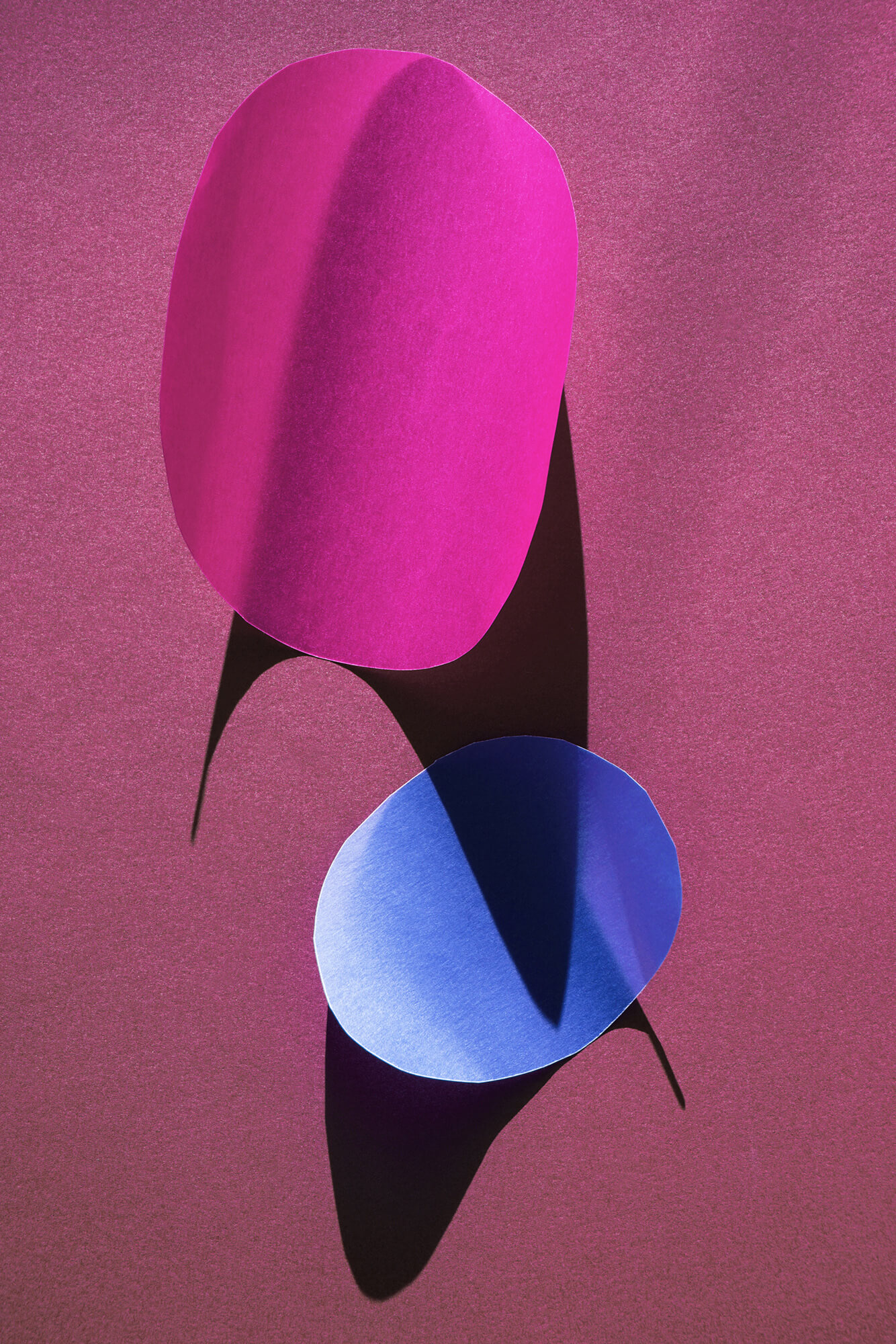#TOUR
Ebe
Level 1 | HELENA PETERSEN
ne 1 | NINA RÖDER

Some news, some events, hit you like a thunderbolt. Within fractions of a second you have deep – stunned – sense of the existential impact of the moment you have witnessed, for better or for worse. In her work, Helena Petersen illustrates precisely that fateful experience with which we are all familiar. Her pyrographies are created with no camera, in a dark shooting range. As photograms, they capture the light of muzzle flashes and include traces of gunpowder. The result is uncontrollable and unpredictable.
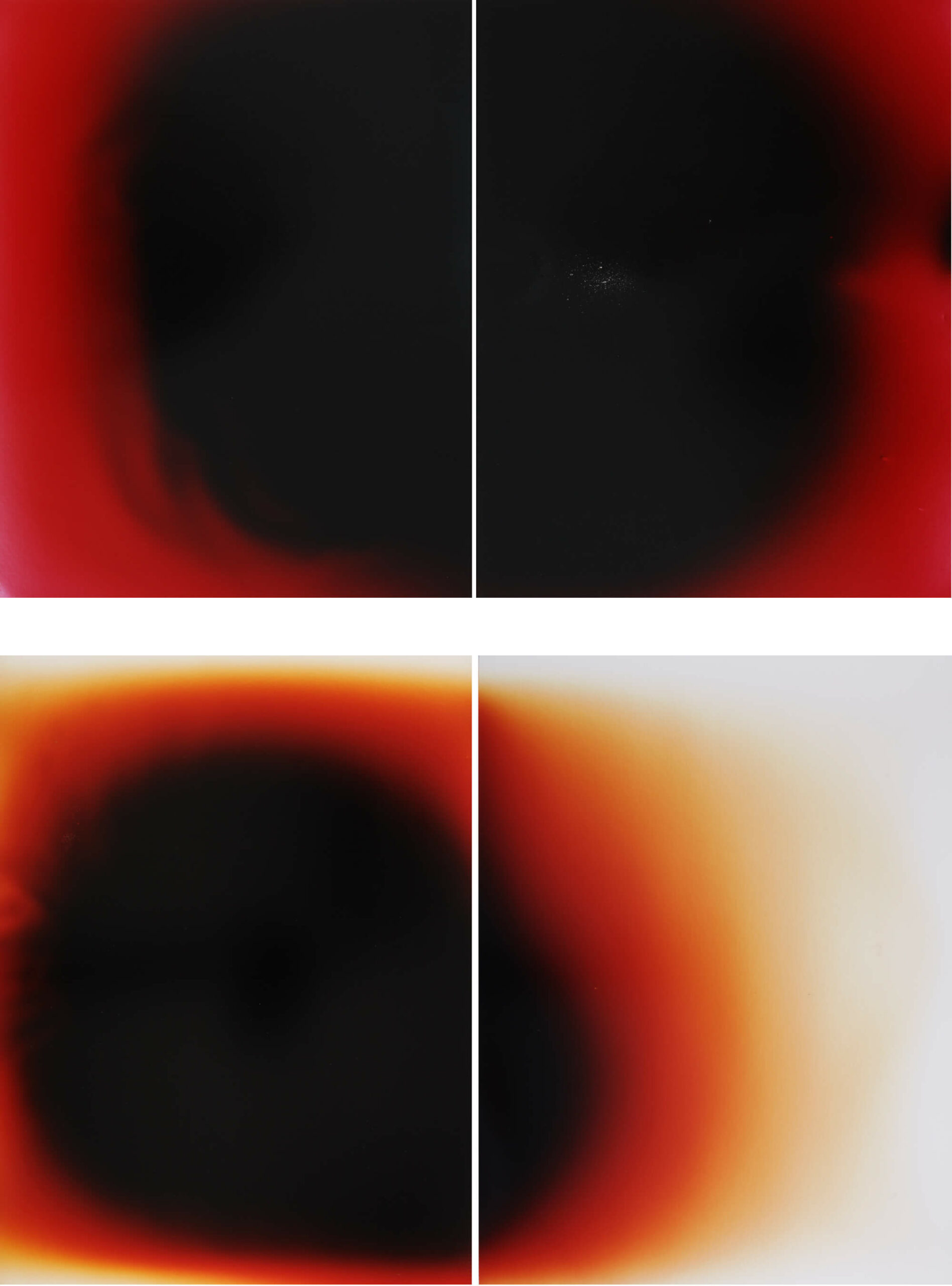
Ebe
LEVEL 1 | BERIT SCHNEIDEREIT
ne 1 | NINA RÖDER
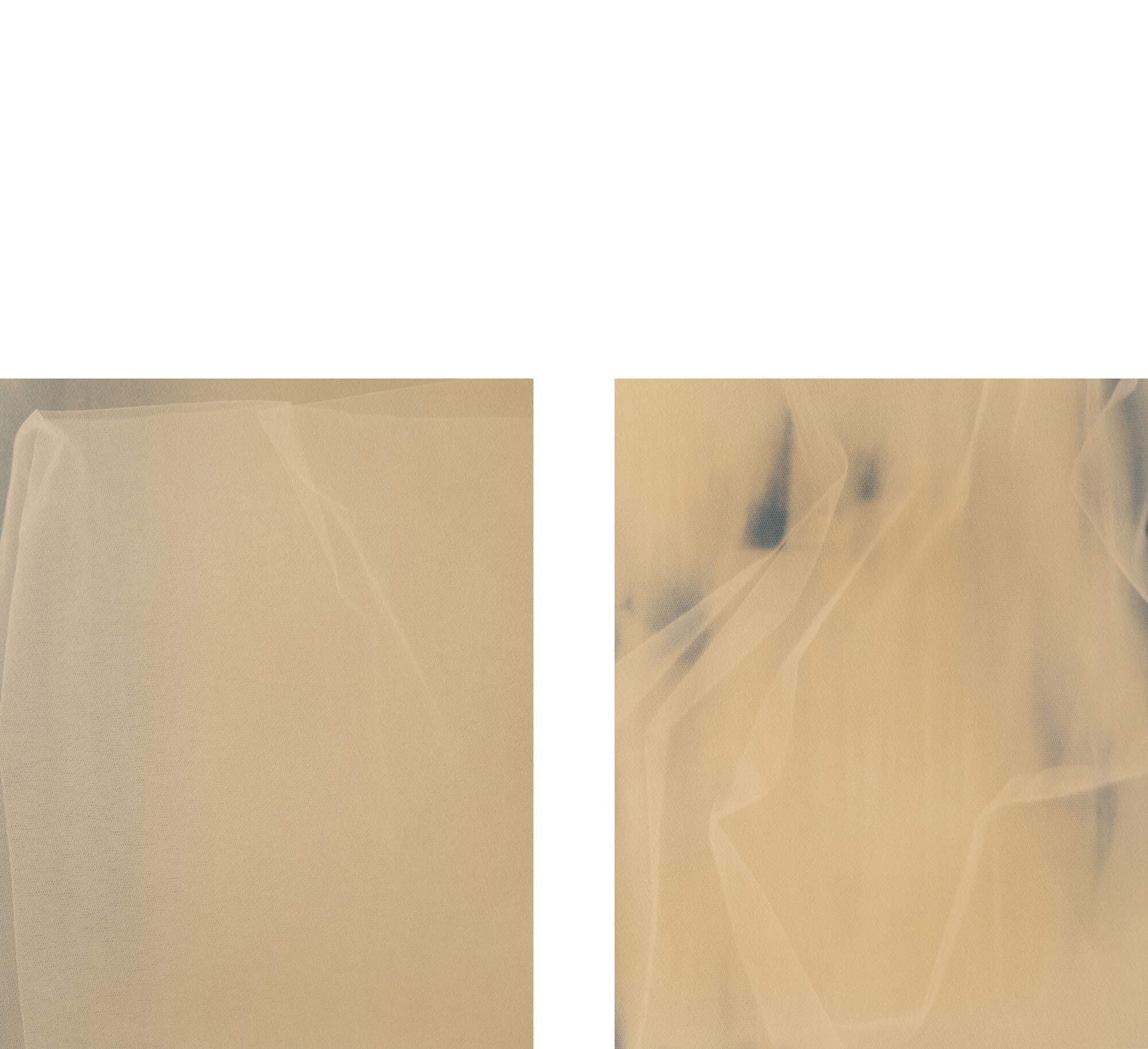
The conceptual work of Berit Schneidereit contains multiple areas of tension, reflected in notional juxtapositions. Digital images of urban parks or botanical gardens become the basis of analogue reproductions. By inserting mesh fabrics during production of the handmade prints, she combines photography with the experimental photogram technique, so that two levels ultimately merge, making the subject the relationship between image surface and image space. In the series of her cyanotypes, artistic traces of transient, three-dimensional formations accordingly meet two-dimensional, pictorial aspects that seem to be outside space and time.
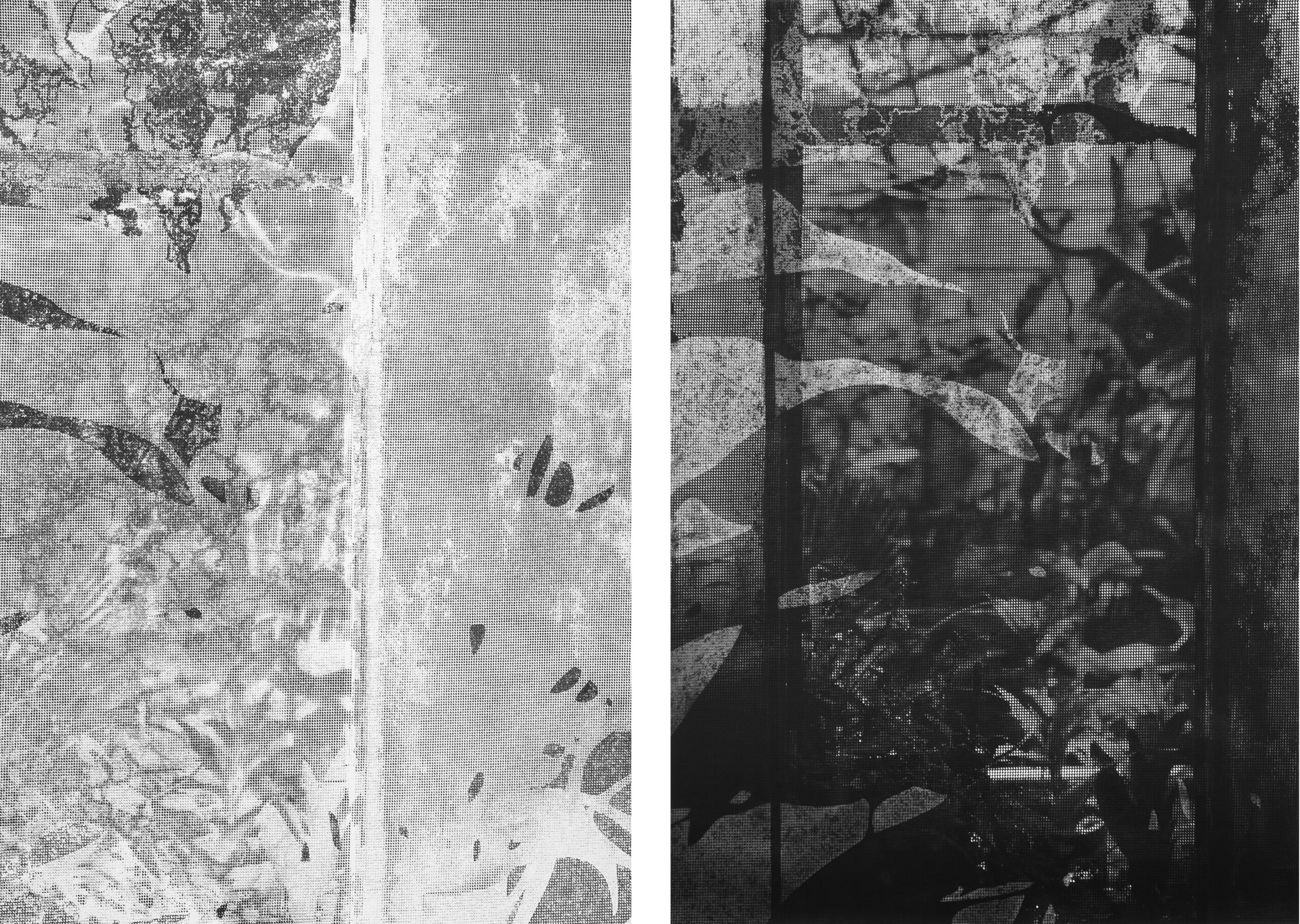
Ebe
LEVEL 1 AND 2 | ALINA FRIESKE
ne 1 | NINA RÖDER
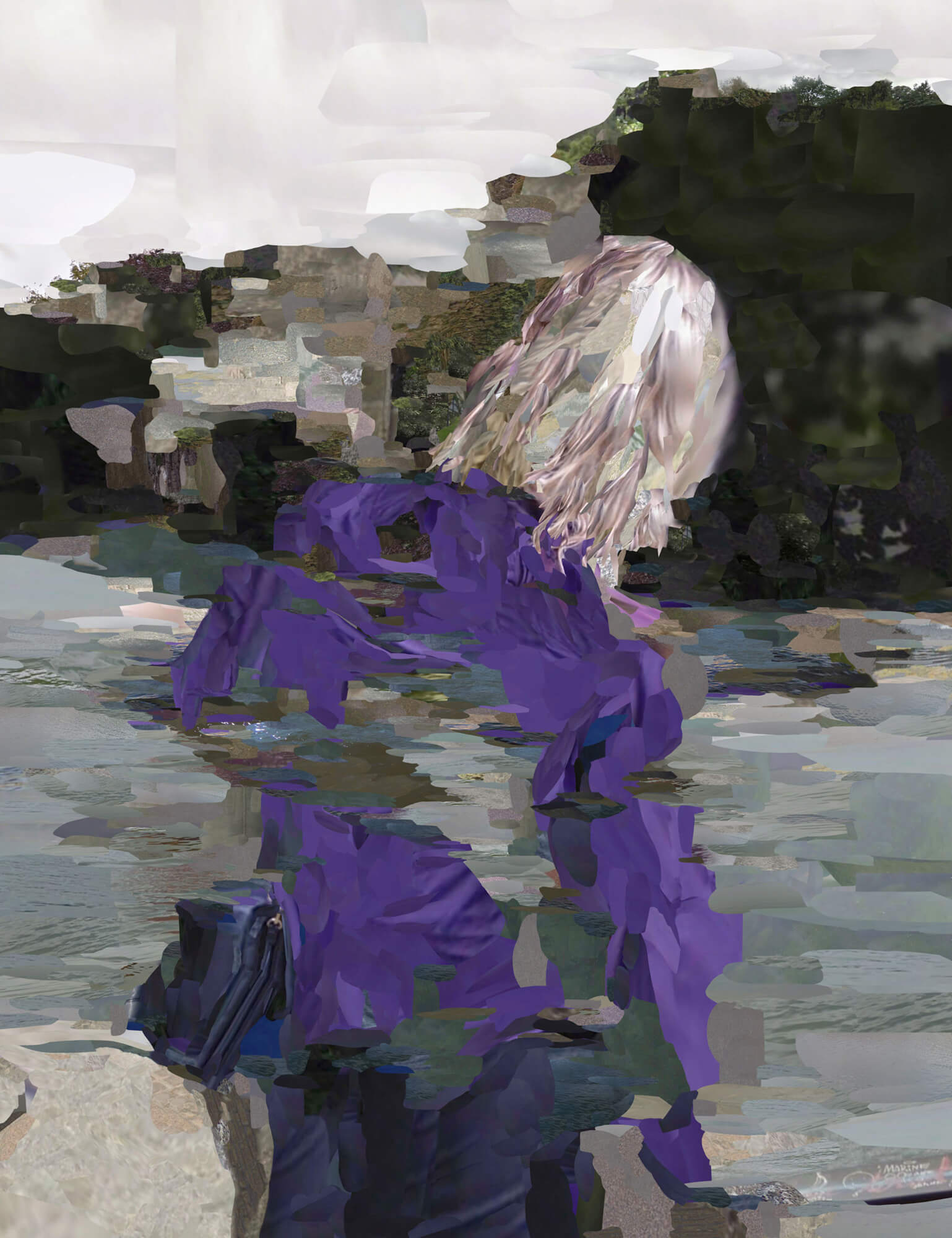
Is this really photography or is it actually painting? The works of Alina Frieske comprise small fragments of digital images. These are based on selfies that circulate on social media, which make public the private, as an act of self-representation, but which lose their personal character as a result of their general availability and the repetition of image patterns. The pictorial gesture resulting from the technique of collage takes the pictures produced from the collectively available material back to the traditional function of the portrait as an individual, pictorial representation and excitingly relates the two aspects to each other.
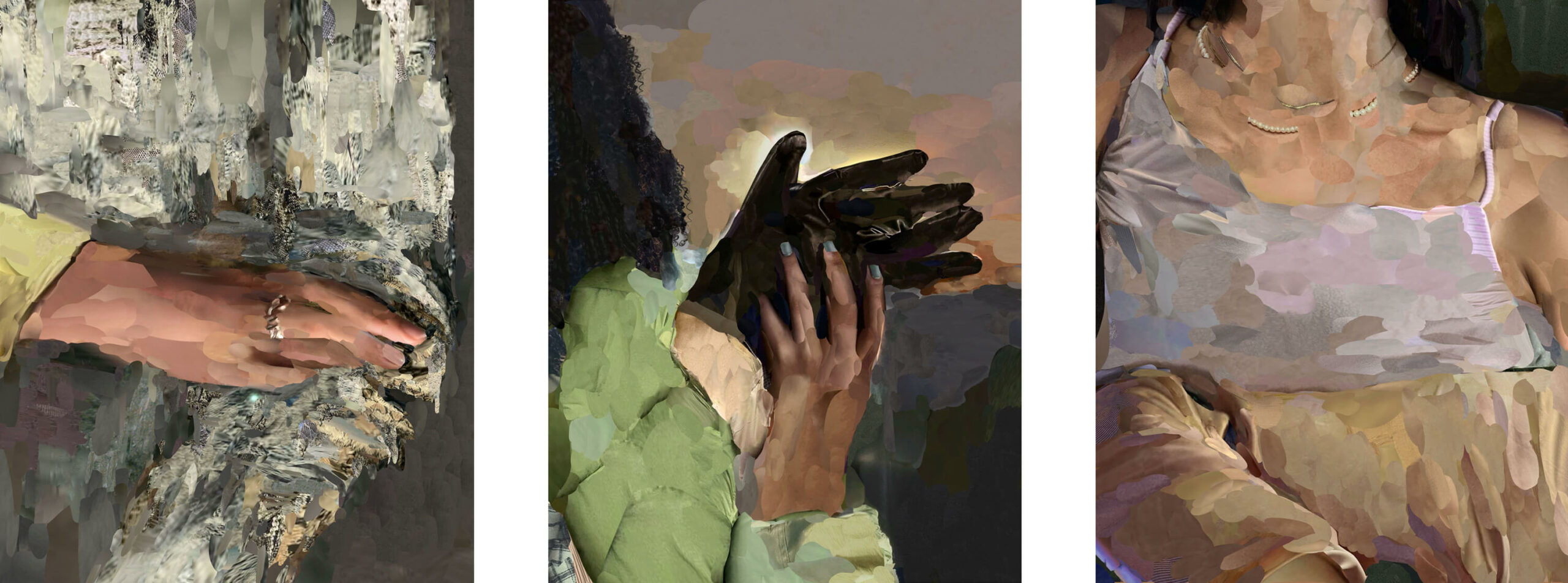
Ebe
Level 2 | MORITZ PARTENHEIMER
ne 1 | NINA RÖDER
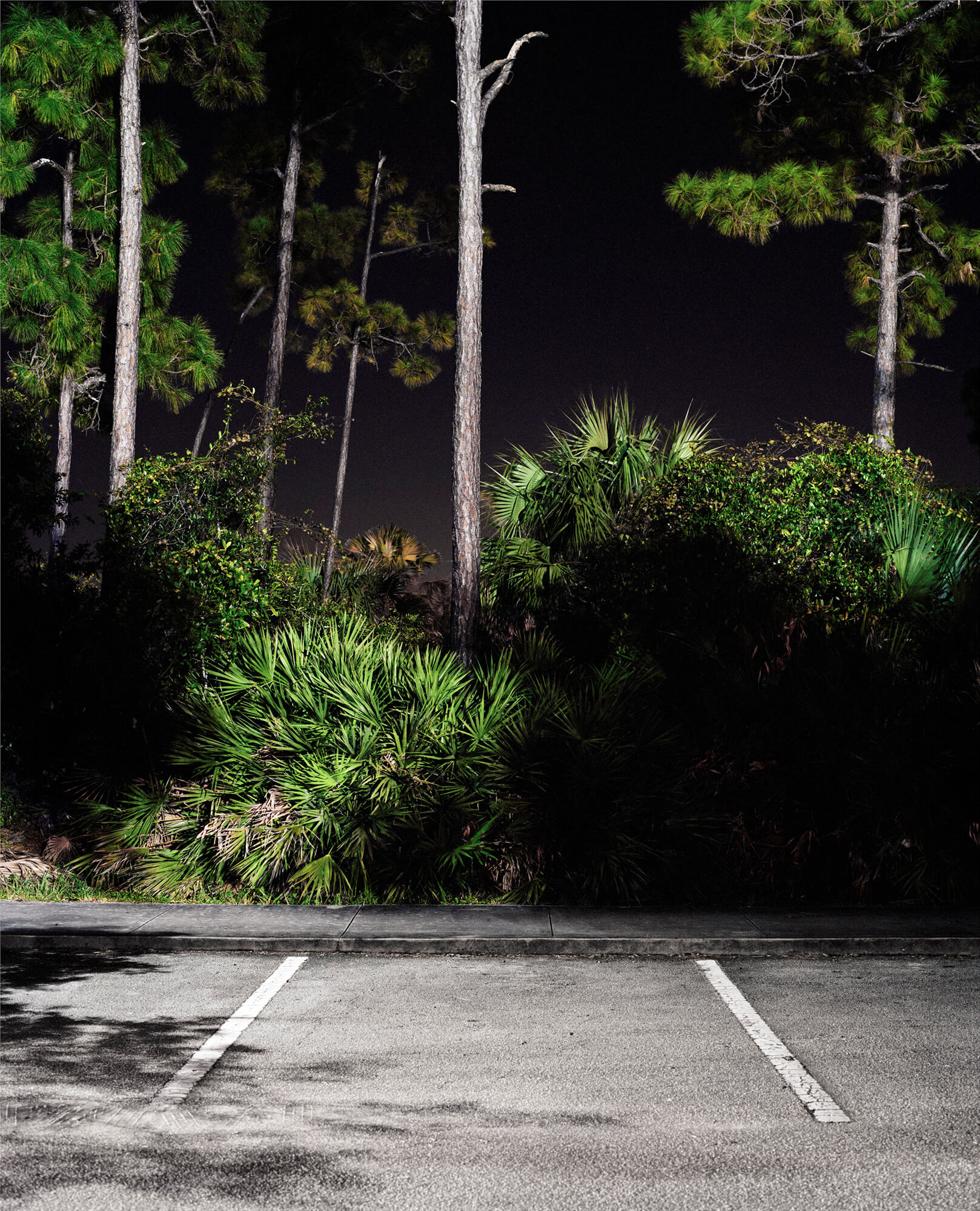
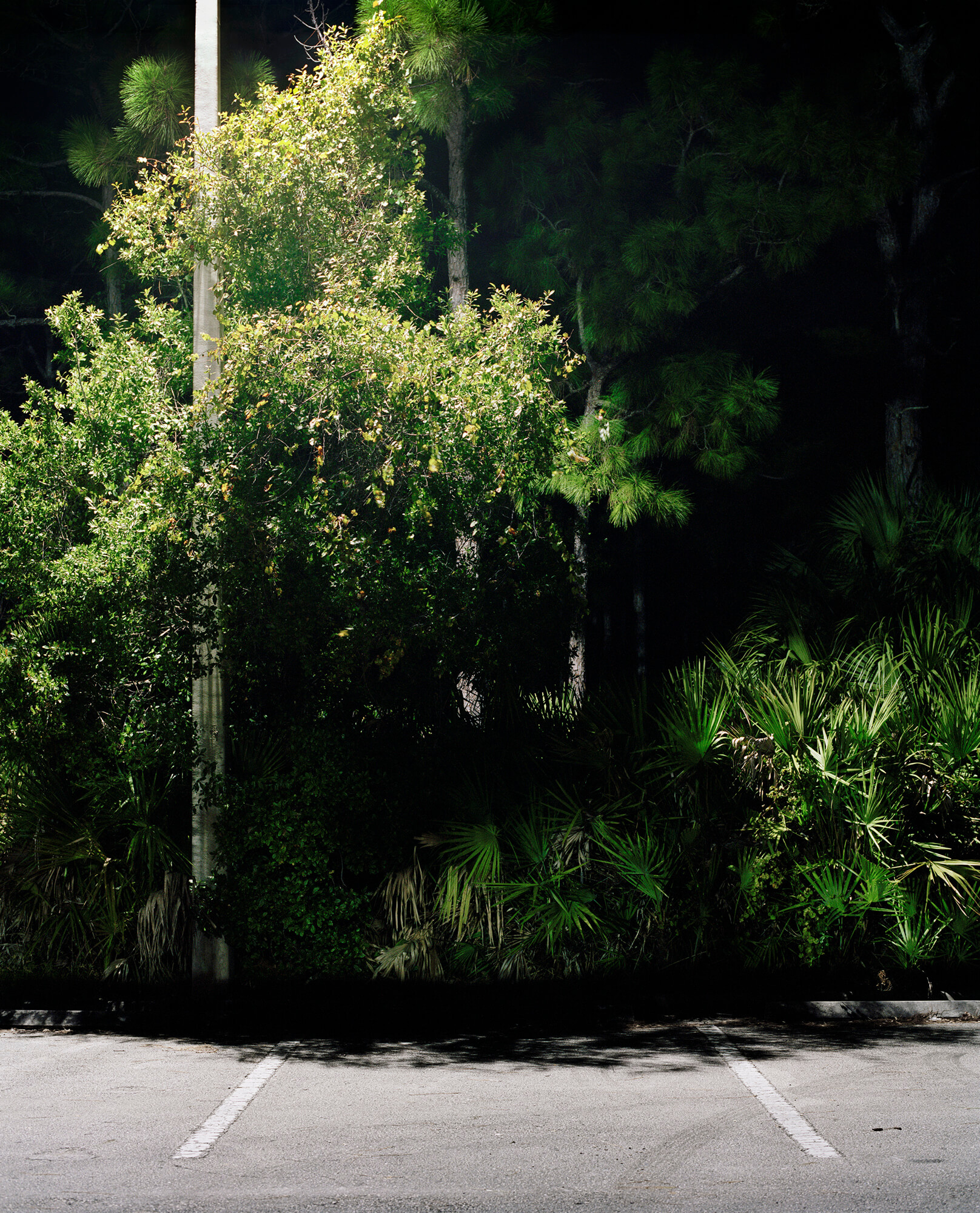
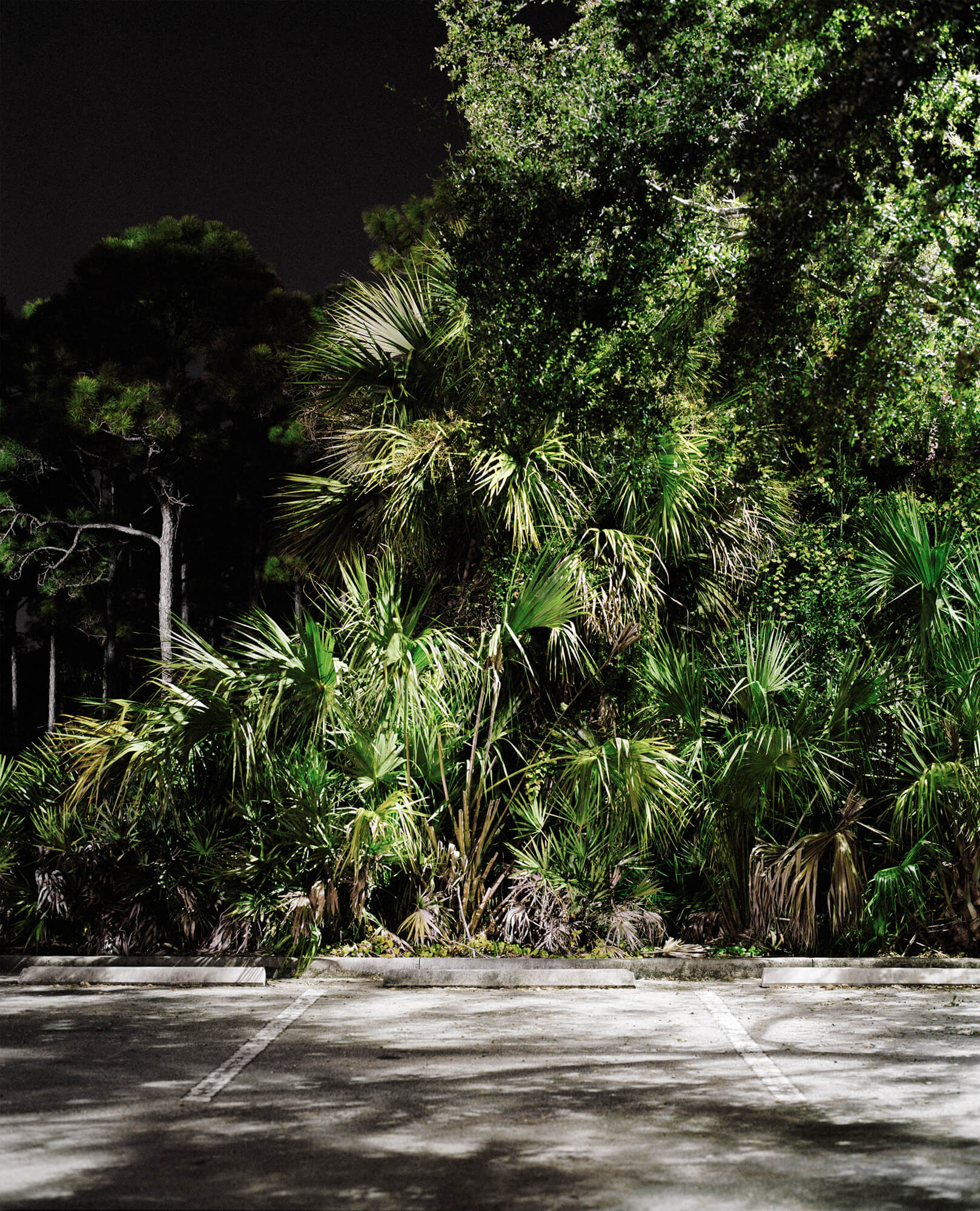
A parking space in Jupiter, Florida: actually a non-place, a place with no history, no identity, abandoned at night. In his photography, Moritz Partenheimer understands how to extract a special magic from the deserted scenery. If you initially feel like you have been transported to a perhaps eerie, certainly dramatically lit film set, your eye is quickly caught by the formal correspondences and the haptic qualities established in the subject.
Ebe
LEVEL 2 | JETTE HELD
ne 1 | NINA RÖDER
In her work, Jette Held focuses on the genre of nature photography, although without pursuing the common image patterns and representation aims. As she herself says, photography is a tool to explore her immediate surroundings and home in the Harz mountains. In the most literal sense, she dives into the reality of the landscape, when – over the years – she takes her pictures under water in a pond or in a dammed stream that serves as a cattle trough. Thus, unexpected, enigmatic images also emerge as photograms, captured on baryta paper by the refraction of the light in the flowing water.
Ebe
LEVEL 2 | LIA DARJES
ne 1 | NINA RÖDER
The splendour of baroque still life painting resounds in Lia Darjes’ artistically illuminated photographs. Yet they do not meet the expectation of overflowing abundance. Neither are they transported away from space and time, as you might think, considering the constantly dark background. The artist captured the still lives of her photographic series Tempora Morte on study trips to the Russian exclave of Kaliningrad. They show the little that people can offer for sale on improvised market stalls to supplement their meagre income: fruit and flowers from their gardens, fish and preserves, sometimes a piece of meat.
Ebe
LEVEL 2 | MONIKA ORPIK
ne 1 | NINA RÖDER
Stepping Out Into This Almost Empty Road is the title of a book project by Monika Orpik. It combines photographs taken between 2020 and 2022 in the Polish border region neighbouring Belarus with texts based on interviews. In the idyllic setting of Białowieża National Park, which has become a focal point of current global politics, relatives of the Belarusian minority and asylum seekers who live there recount their experiences of migration. At the same time the photographs reflect their efforts to form a new social community in the permanent or temporary shelter.
Ebe
LEVEL 2 | MARTINA SAUTER
ne 1 | NINA RÖDER
The pictures, generally arranged in pairs presented as an installation in the News: Fiction series of works by Martina Sauter, are alike. Facing one another are snapshots and clips from real and fictitious action sequences. Newspaper photographs published during the coronavirus pandemic, film stills from the psychological thriller series Fortitude on British television, and images by the artist are lifted out of temporality and abstracted by the blue tone of the cyanotype process that is incorporated in the production process. When combined, they create an intriguing real/unreal setting, which – when viewed – unlocks memories and mental images with a plot of their own.
Ebe
LEVEL 2 | SARA-LENA MAIERHOFER
ne 1 | NINA RÖDER
Illustrations of African masks are inscribed into three-dimensional models of ethnological museum floor plans. Colour photograms show shelves on which ethnological artefacts with bright, blurred shadows stand out from the dark background. In her series of works entitled Cabinets, created between 2017 and 2021, Sara-Lena Maierhofer tackles questions about the handling of colonial heritage and undertakes a sort of exploration of the inside of the museum institutions. With her two artistic strategies, photo-sculpture and the photogram, she examines aspects both of presentation and of keeping the objects in the institutional context.
Ebe
LEVEL 3 | ALWIN LAY
ne 1 | NINA RÖDER
In Alwin Lay’s photographs, ordinary objects and everyday items become participants. Sculpturally placed within the image, they seem to develop a life of their own, based on their respective material properties and functions, yet they stand in contrast to the usual expectations that we associate with the objects. The mystery of how his pictures are created is not revealed; the supposedly clear reference of the subject to a real item or event appears ironically broken, shaking much of what we think we know about photography.
Ebe
LEVEL 3 | KATHRIN SONNTAG
ne 1 | NINA RÖDER
The productivity of human perception and the extent to which it is connected with inner imaginings and associations are illustrated by Kathrin Sonntag in her series of works entitled Body Parts. Fragments of statues, which we naturally relate to the wholeness of our own bodies, appear next to photographs in which inanimate objects resemble limbs and organs – or conversely, body parts that evoke objects. A deceptive puzzle emerges between objective reality and subjective interpretation, challenging both the conditions and the principles of photography.
Ebe
LEVEL 3 | JESSICA BACKHAUS
ne 1 | NINA RÖDER
With their luminous colouring, the Cut Outs by Jessica Backhaus beam, as if they had assimilated into themselves all the energy and life-affirming power of the colours and light. Geometric shapes – cut out of transparent paper and arranged on monochrome surfaces by the artist – develop an almost dancelike interaction under the effect of the sun. They deform, bulge, produce colour distinctions, throw sharp-edged shadows. With a focus on the exceptional in the random and apparently unspectacular, Jessica Backhaus captures in photographs the constellations that exist in this way only for a short time, evincing a pictorial and poetic effect.

